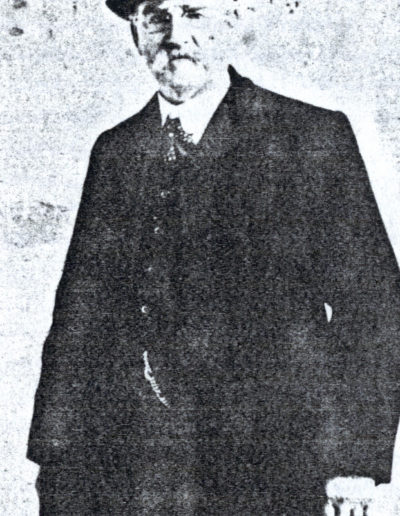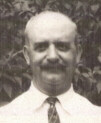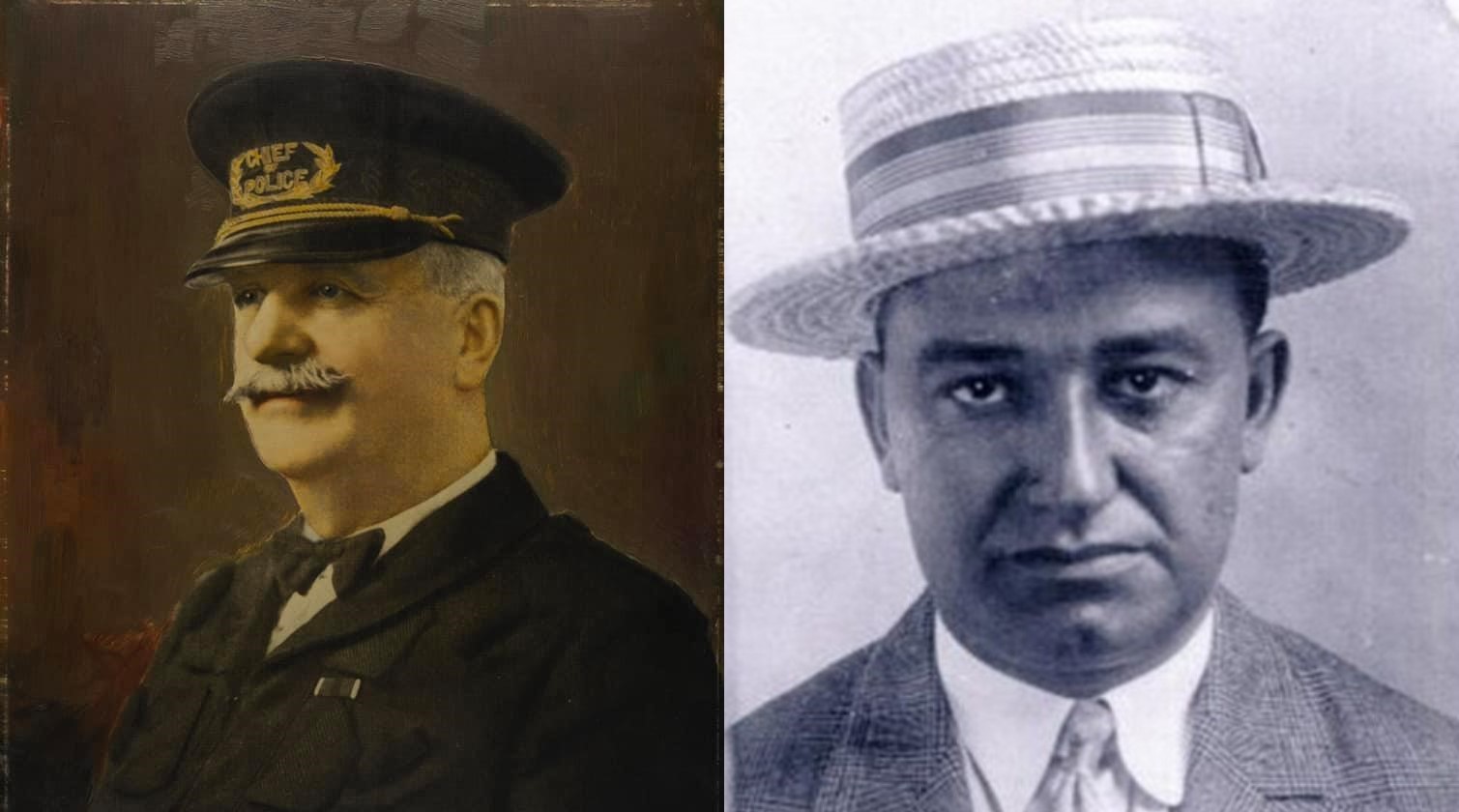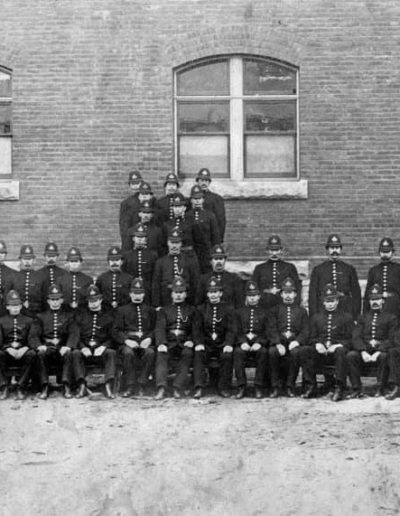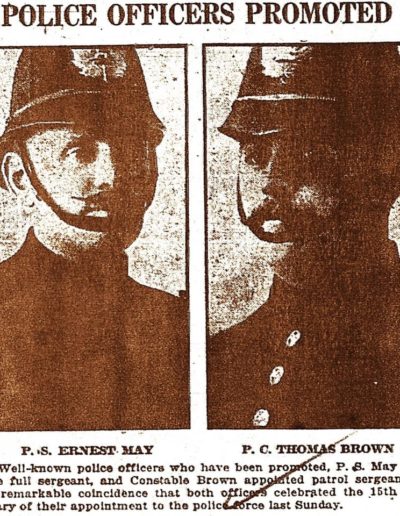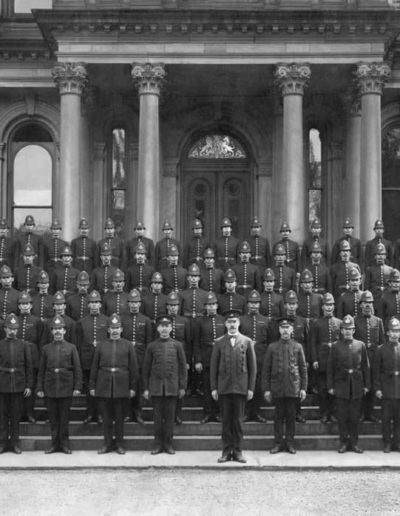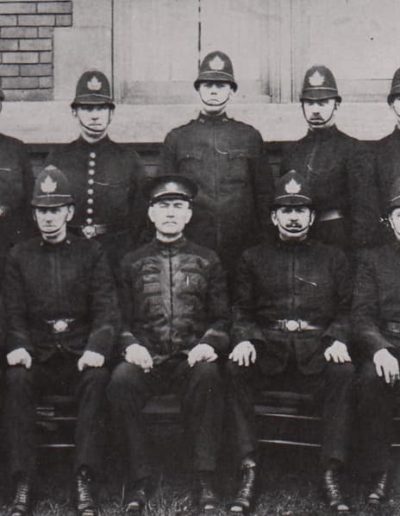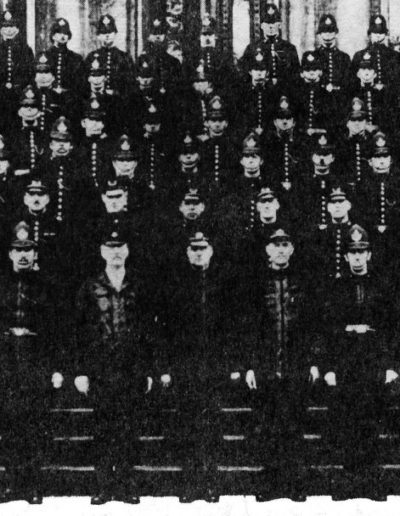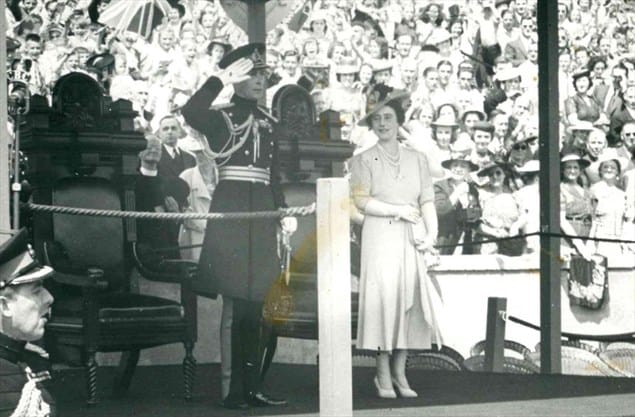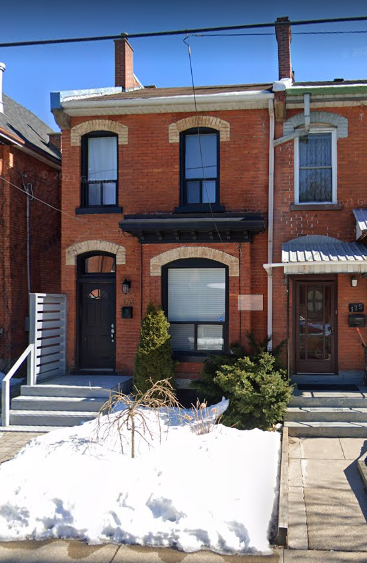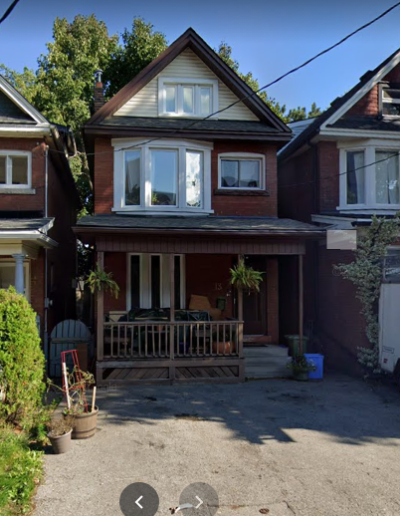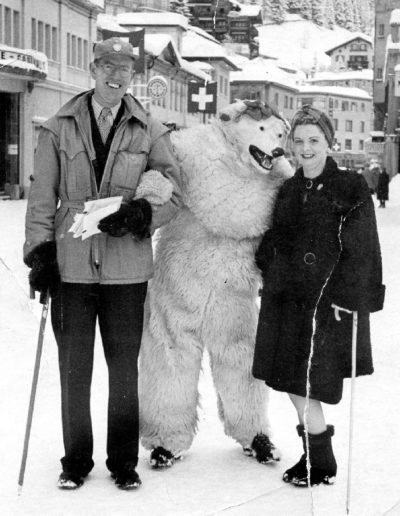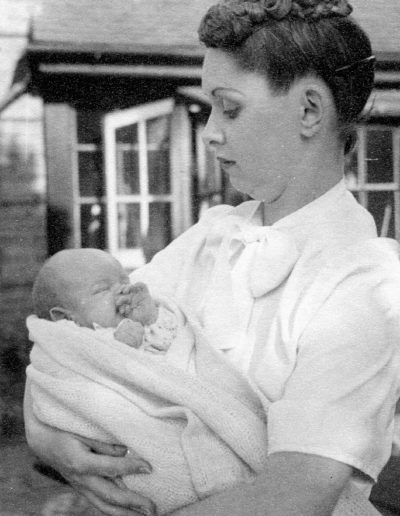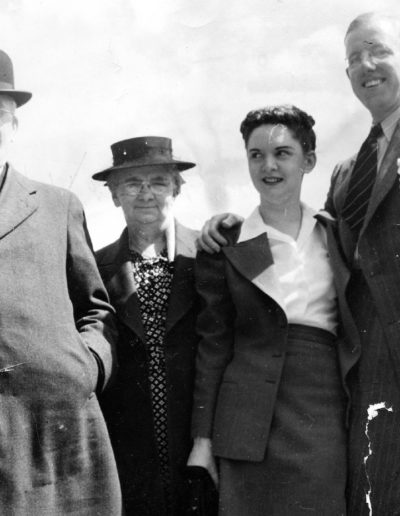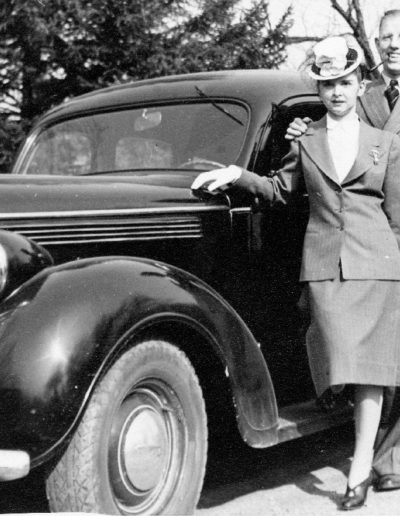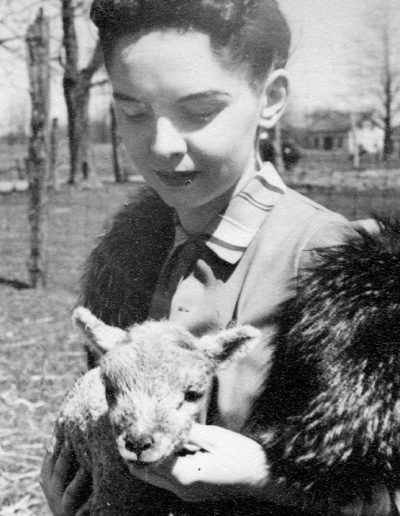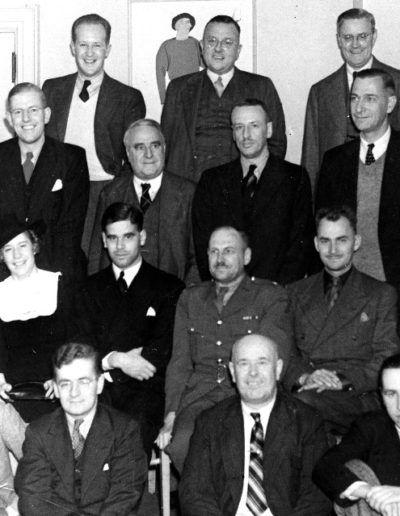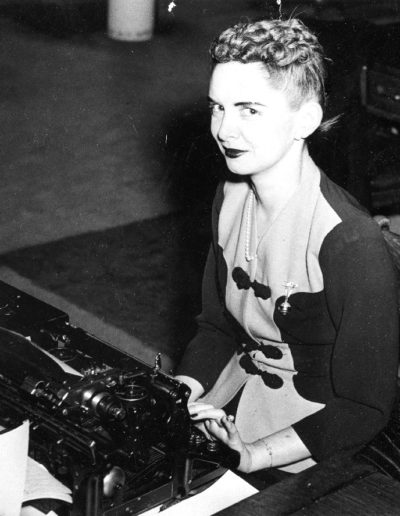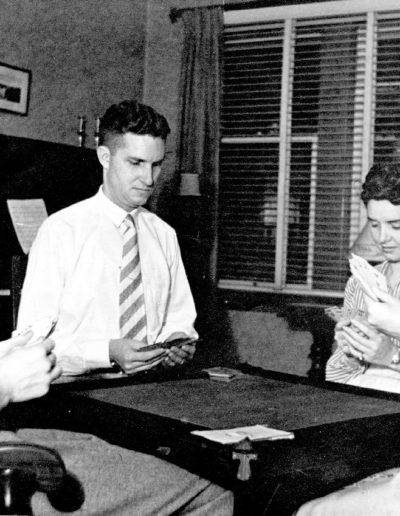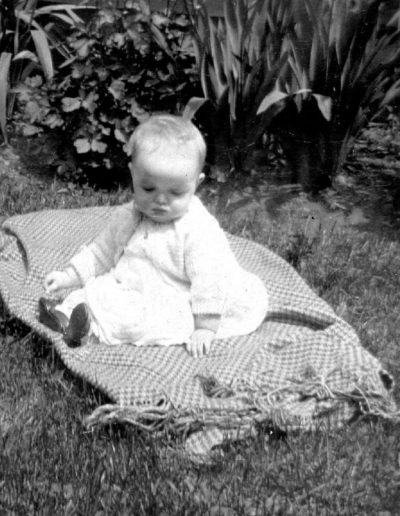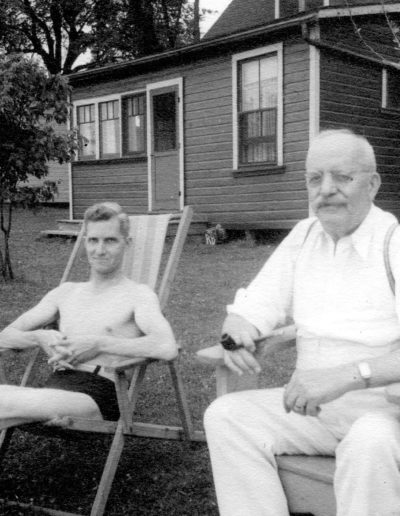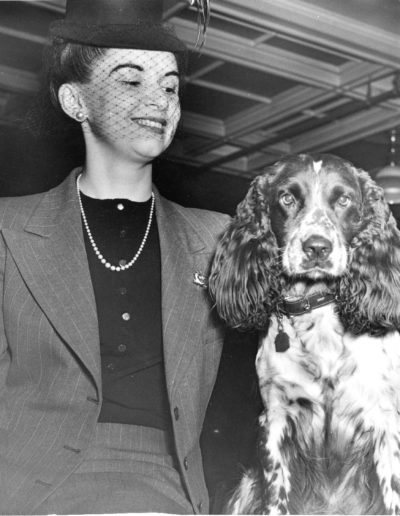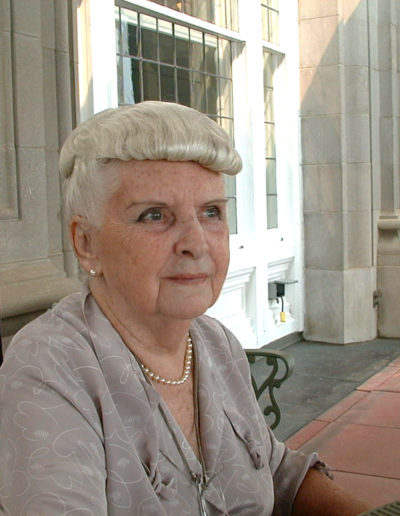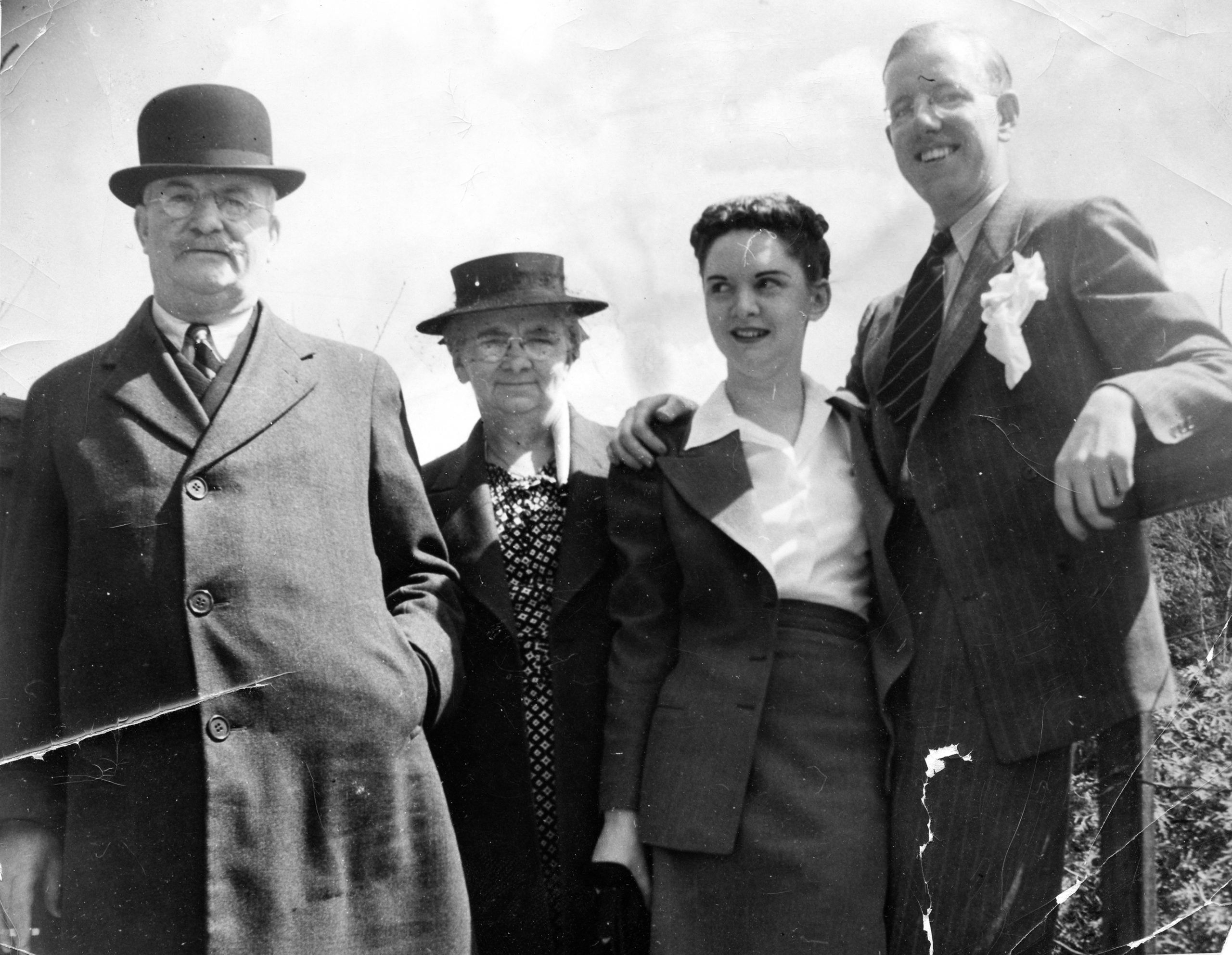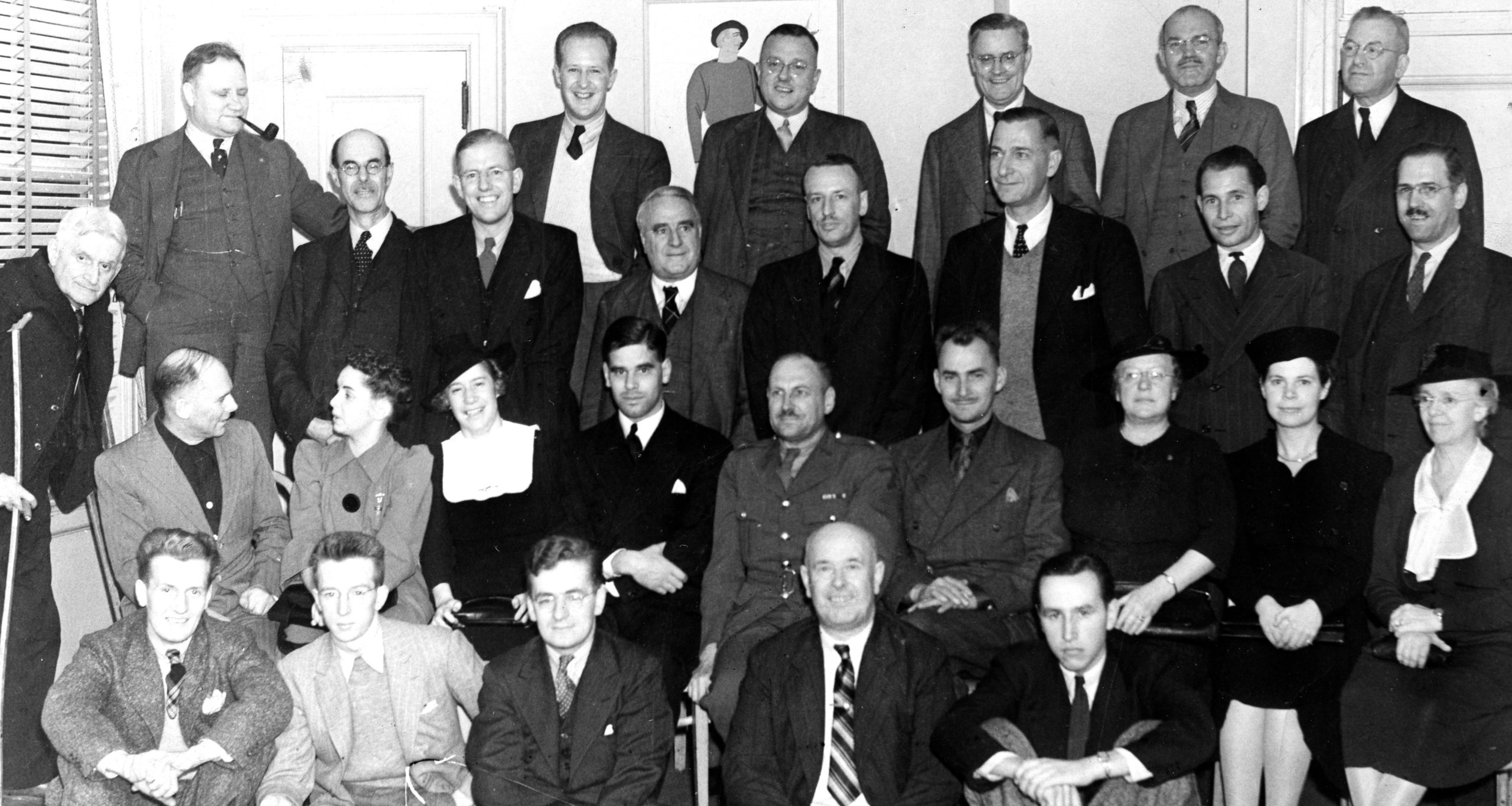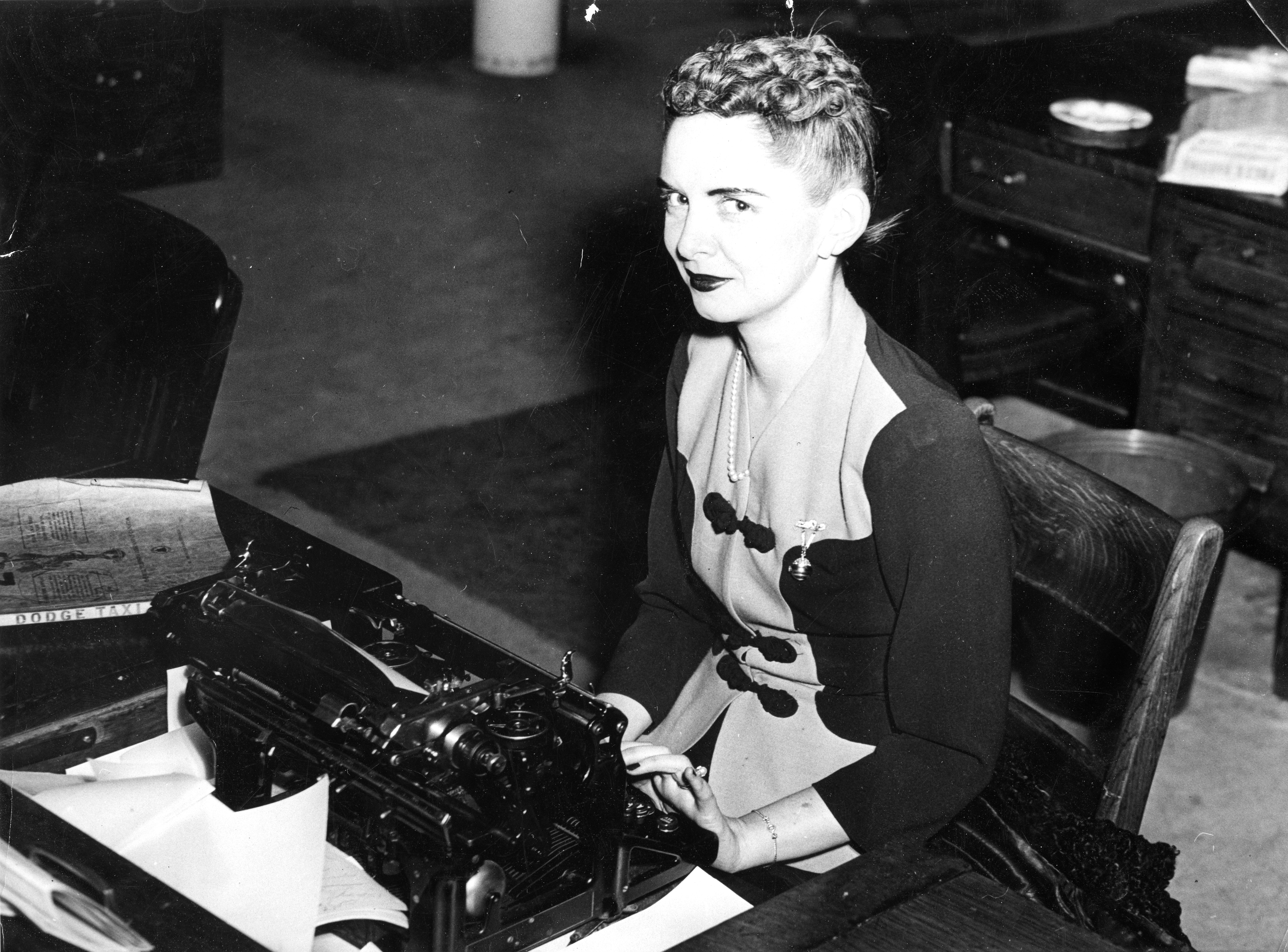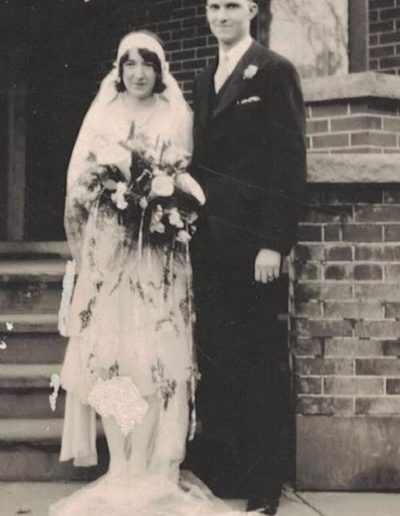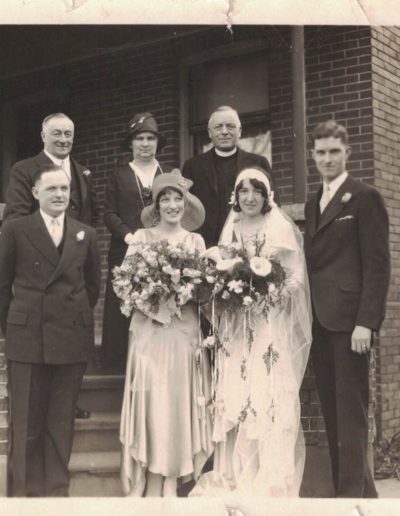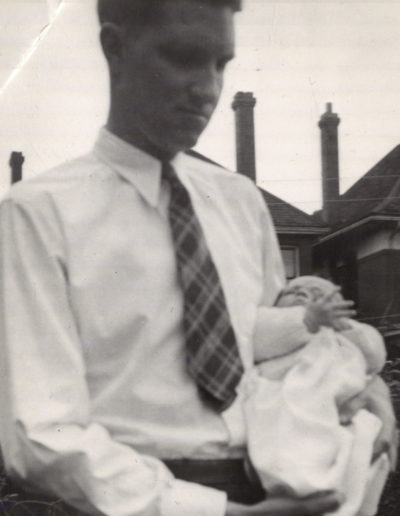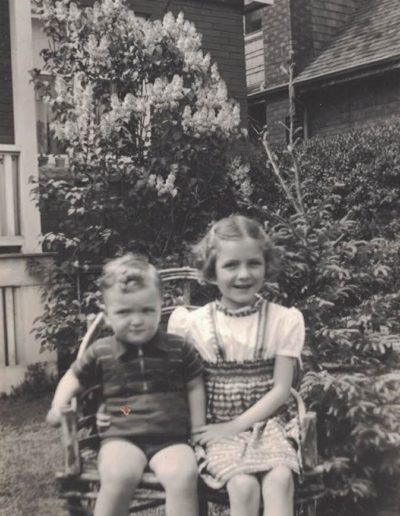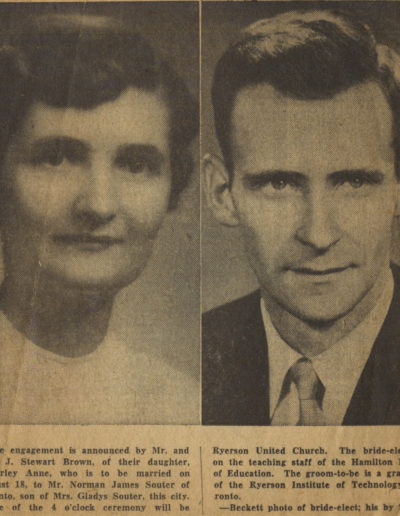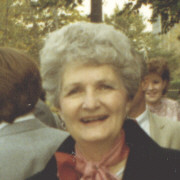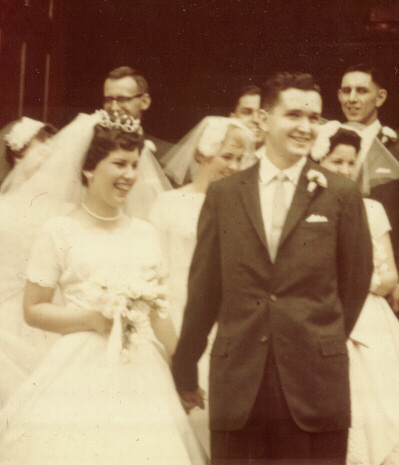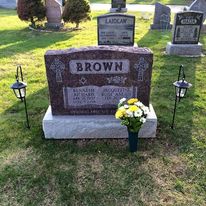A Brown Family in Hamilton, Wentworth, Ontario, Canada
Here I present my ancestral Brown family in Hamilton, Wentworth, Ontario, Canada. They descend from a family of Browns in Tandragee, Armagh, Ireland, who immigrated to Hamilton in the late 19th century. Their ancestry can be traced back to Scottish Covenanters who likely emigrated from Lowland Scotland to Northern Ireland in the late 17th or early 18th century.
Robert Brown and Ruth Smith had five children, two of whom immigrated to Hamilton, Ontario, Canada:
- Rachel Brown and her husband William James Brown, both from Tandragee, came to Canada sometime shortly after their marriage in 1873. William had actually immigrated 7 years earlier, in 1866, and then went back to Ireland to marry Rachel and bring her back to Canada.
- John Brown, eldest surviving son of Robert Brown and Ruth Smith, followed his younger sister and brother-in-law to Hamilton, Ontario, Canada in 1888. Both families lived mere blocks from each other.
Ruth Brown (Smith)’s will, probated 24 July 1902, reads in part: “This is the last will and testament of me, Ruth Brown of Portadown, in the county of Armagh. Widow…. I devise and bequeath all my property, real and personal whatsoever and wheresoever situte, to my two sons, William James Brown and John Brown, both at present residing in America….” Scots-Irish culture did not always differentiate between ‘son’ and ‘son-in-law’, using the word ‘son’ to mean either. Documentary evidence shows that William James Brown was Ruth’s son-in-law.
Within two generations these two sibling branches had lost touch with each other. Their descendants knew nothing of their cousins existence in Canada until this research project revealed the connections.
Their ancestors are presented on my Brown in Tandragee page:
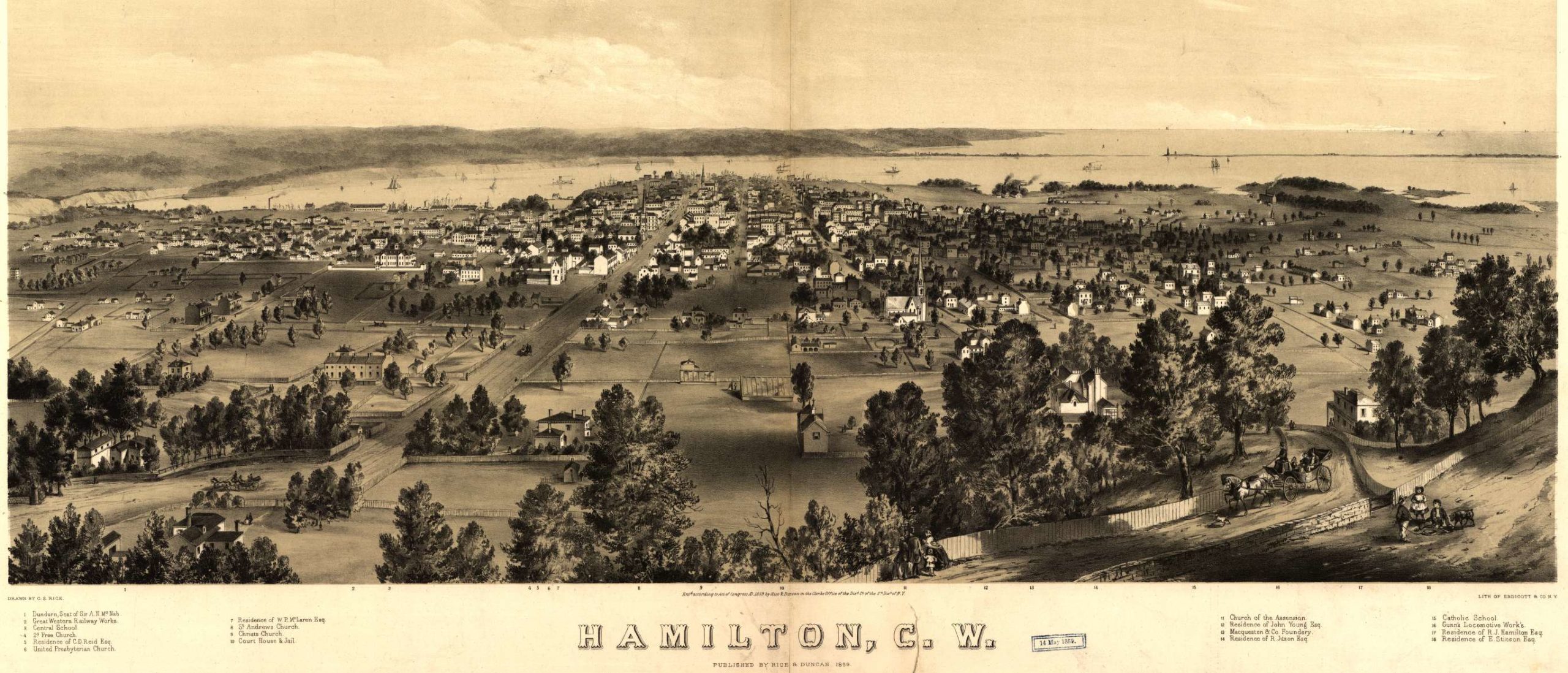
Hamilton, Wentworth, Ontario, Canada
The city of Hamilton is located at the west end of Lake Ontario. It was founded in 1815 by George Hamilton on a plain between the Niagara Escarpment and the lake. Today the population is over a half-million people. In 1888, when our Brown family arrived from Ireland, the population was about 42000, less than a tenth of today’s population.
In pre-colonial times, prior to European settlement, the land on which Hamilton sits was home to the Chonnonton, or Attiwandaronk, an Iroquois-speaking nation referred to by French explorers as the “Neutral” people, and later by the Five (later Six) Nations of the Iroquois people, who were allied with the British in their conflict with the French.
After the American Revolution (1776-1778), around 10,000 United Empire Loyalists left the newly formed United States to resettle in British-controlled territory in what is now southern Ontario, forming many new settlements. During the War of 1812, British Loyalists repelled American invaders at the Battle of Stoney Creek in what is now the east end of the city.
By the middle of the 19th century, Hamilton was emerging as a booming industrial city and acquired the nicknames, “The Steel City” and “The Birmingham of Canada.” It boomed with the arrival of the railway which connected the city to both New York and Chicago, becoming, for decades, the route of choice for Americans travelling between those two cities. Hamilton was also a destination city for another imporant “railroad,” namely, The Underground Railroad, bringing many freed slaves to the city.
Towards the end of the 19th century, the city saw a massive increase in population largely from British immigrants, and especially, Irish and Ulster-Scots. By the beginning of the 20th century, the local population was overwhelmingly British.
In the opening years of the 20th century, the steel industry dominated Hamilton, supplemented by many supporting and diverse industries. Hamilton was central in the emergence of the labour movement in Canada and remains predominantly loyal to labour politics to this day. The thriving industrial culture attracted new immigrants from Europe and elsewhere, including a singificant influx of Italian immigrants.
The arrival of freed slaves from the south and continental Europeans from overseas resulted in protectionist and segreationist policies being implemented in the city. For example, the newly formed Westdale neighbourhood was zoned for residents of British origins only.
Our Brown family would find itself at the centre of the racist culture clash between between British and Italian immigrants, the former of which were not even classed as immigrants, revealing the bias of the dominant culture. This would reach its zenith at the outbreak of World War II with the widespread arrests and internment of Italians in the city (and across the country), in which Police Chief Tom Brown (below) took a central role.
William James Brown and Rachel Brown in Hamilton, Wentworth, Ontario, Canada
William James Brown, b. 22 Jul 1849, Tandragee, County Armagh, Ireland  , d. 28 Dec 1907, Toronto, York, Ontario, Canada
, d. 28 Dec 1907, Toronto, York, Ontario, Canada  (Age 58 years). His father’s name was either William or Robert (sources conflict). His mother’s name is unknown. He married on 7 Nov 1873 in Tandragee, Armagh, Ireland to Rachel Brown, b. 15 May 1853, Derryagh, Milltown Cl, Armagh, Ireland
(Age 58 years). His father’s name was either William or Robert (sources conflict). His mother’s name is unknown. He married on 7 Nov 1873 in Tandragee, Armagh, Ireland to Rachel Brown, b. 15 May 1853, Derryagh, Milltown Cl, Armagh, Ireland  , d. 10 Aug 1890, Wentworth, Ontario, Canada
, d. 10 Aug 1890, Wentworth, Ontario, Canada  (Age 37 years). She was the daughter of Robert Brown and Ruth Smith in Tandragee. She was the youngest sister of John Brown, shown below. Rachel and her husband, William, shared the same surname and came from the same village. However it is not known if they were distantly related.
(Age 37 years). She was the daughter of Robert Brown and Ruth Smith in Tandragee. She was the youngest sister of John Brown, shown below. Rachel and her husband, William, shared the same surname and came from the same village. However it is not known if they were distantly related.
After Rachel Brown died in 1890, William James Brown married secondly on 13 Dec 1894 in Hamilton Wentworth, Ontario, Canada to Elizabeth Leonard, b. 1854, Toronto, York, Ontario, Canada  , d. UNKNOWN, Ontario, Canada. They had no known children.
, d. UNKNOWN, Ontario, Canada. They had no known children.
William immigrated from Tandragee, Armagh, Northern Ireland to Hamilton, Wentworth, Ontario, Canada at the age of 16 in 1866. He is found in 1871 residing in St. Lawrence Ward, Hamilton, Wentworth, Ontario, Canada, employed as a moulder. He was residing among a large group of Irish immigrant labourers who appear to be not related.
William’s marriage record indicates that he was an iron moulder, son of William Brown, farmer. He was born in 1849 and residing in Tandragee. He married Rachel Brown, daughter of Robert Brown, baker in Tandragee. At his marriage, William James Brown was employed as an iron moulder. Another record gives William’s parents as Robert and Sarah
William is found in 1881 in Hamilton, Ward 6 with his first wife, Rachel and his first two children. Birth records confirm the children were born in Ontario, thus William and Rachel were in Canada prior to 1878.
In 1891 William is found residing in Hamilton, Ward 7, employed as a moulder, nearby to his brother-in-law, John Brown.
In 1894, William married secondly to Elizabeth Leonard at which he gives his parents’ names as Robert (or Albert?) and Sarah.
In 1901 William is found residing with his 2nd wife, Elizabeth, in Ward 6, Hamilton City as lodgers of Mary Garnet. It indicates that he immigrated in 1866, 22 years prior to his suggested brother, John Brown.
A William J Brown died from chronic pneumonia at the Toronto General Hospital on 28 Sep 1907 and buried 16 Oct 1907, age 59, born 1848 in Ireland. He is buried in Necropolis Cemetery in a plot owned by Robert James Brown. He was a widower employed as a moulder. His son, Robert James Brown, moved to Cabbagetown in Toronto which is where Necropolis Cemetery is located. Robert had a daughter who died in infancy who is also buried in Necropolis, which would seem to confirm that the William J Brown thus mentioned is the correct one.
The following record may also be this William James Brown:
Name: William James Brown
Marriage Date: 9 Jun 1883
Marriage Place: Hamilton, Ontario, Canada
Spouse: May Ellen Linburne
William James Brown had the following children by his first wife, Rachel Brown:
1. Sarah Elizabeth Brown, b. 28 Sep 1878, Hamilton, Wentworth, Ontario, Canada, d. UNKNOWN
Sarah Elizabeth Brown, b. 28 Sep 1878, Hamilton, Wentworth, Ontario, Canada  , d. UNKNOWN. Sarah married on 15 Jan 1896 in Hamilton, Wentworth, Ontario, Canada to William Henry Abby, b. 1877, Hamilton, Wentworth, Ontario, Canada
, d. UNKNOWN. Sarah married on 15 Jan 1896 in Hamilton, Wentworth, Ontario, Canada to William Henry Abby, b. 1877, Hamilton, Wentworth, Ontario, Canada  , d. UNKNOWN. Sarah and William vanish from records after their marriage. They may have moved away from the area. Census searches have uncovered nothing.
, d. UNKNOWN. Sarah and William vanish from records after their marriage. They may have moved away from the area. Census searches have uncovered nothing.
2. Robert James Brown, b. 17 Aug 1880, Hamilton, Wentworth, Ontario, Canada, d. 17 Oct 1956, Toronto, York, Ontario, Canada (Age 76 years)
Robert James Brown, b. 17 Aug 1880, Hamilton, Wentworth, Ontario, Canada  , d. 17 Oct 1956, Toronto, York, Ontario, Canada
, d. 17 Oct 1956, Toronto, York, Ontario, Canada  (Age 76 years). Robert married firstly on 19 Jan 1901 in Hamilton, Wentworth, Ontario, Canada to Grace Ellen Worthington, b. 13 May 1880, Burlington, Halton, Ontario, Canada
(Age 76 years). Robert married firstly on 19 Jan 1901 in Hamilton, Wentworth, Ontario, Canada to Grace Ellen Worthington, b. 13 May 1880, Burlington, Halton, Ontario, Canada  , d. UNKNOWN, Hamilton, Wentworth, Ontario, Canada
, d. UNKNOWN, Hamilton, Wentworth, Ontario, Canada  .
.
-
- Mabel Brown, b. 21 Oct 1899, Hamilton, Wentworth, Ontario, Canada
 , d. UNKNOWN. Mabel was born two years prior to her parents’ marriage. She is found only in the 1901 census. She is not found wth her father and his second wife in 1911, nor has she been found elsewhere in the 1911 census. No marriage or death record has been found for her.
, d. UNKNOWN. Mabel was born two years prior to her parents’ marriage. She is found only in the 1901 census. She is not found wth her father and his second wife in 1911, nor has she been found elsewhere in the 1911 census. No marriage or death record has been found for her.
- Mabel Brown, b. 21 Oct 1899, Hamilton, Wentworth, Ontario, Canada
Robert’s birth record in Hamilton in 1880 gives his name as Robert James Brown, son of William James Brown, a moulder, and Rachel Brown. In 1881, he is shown residing in Hamilton with his parents, William and Rachel Brown, and his sister, Sarah Elizabeth.
In 1891, he is found in Hamilton with his widowed father and two siblings. His name is given as Robert Brown.
Robert’s 1901 marriage in Hamilton to Grace Worthington shows his parents as William Brown and Rachel Brown. His name is given as Robert James Brown and he was employed as a labourer. He is found in 1901 in Hamilton, Ward 6, with his wife Grace and newborn daughter Mabel. He was employed as a roller. In 1904 he married to Emma Arnold and his name is given as James Robert Brown with parents William Brown and Rachel (no surname). In 1921, Emma gives his name as James Brown where they are shown with the three children shown here, but no sign of his daughter, Mabel, from his first marriage.
31 July 1915, James Robert Brown, WWI attestation papers issued. Wife: Emma. Gives birth as 17 Aug 1883 (not 1880).
Undated discharge papers for James Robert Brown, medically unfit, hand-written note says deceased 17-10-56,
4 Aug 1916 death of Robert James Brown, age 36, 132 Balliol Street, Toronto.
Robert James Brown married secondly 21 Nov 1904 in Hamilton, Wentworth, Ontario, Canada to Emma Arnold, b. 1883, Toronto, York, Ontario, Canada  , d. 1974, Bancroft, Hastings Co, Ontario, Canada
, d. 1974, Bancroft, Hastings Co, Ontario, Canada  (Age 91 years). They had the following children:
(Age 91 years). They had the following children:
-
- Mabel Emma Brown, b. 21 May 1905, Toronto, York, Ontario, Canada
 , d. 31 Aug 1905, Toronto, York, Ontario, Canada
, d. 31 Aug 1905, Toronto, York, Ontario, Canada  (Age 0 years). According Mabel’s death registration, she died of marasmus (severe malnutrition). This can be caused by viral infection, inadequate production of breast milk, or neglect.
(Age 0 years). According Mabel’s death registration, she died of marasmus (severe malnutrition). This can be caused by viral infection, inadequate production of breast milk, or neglect. - Robert Brown, b. 1915, Toronto, York, Ontario, Canada
 , d. UNKNOWN. Robert is not recorded in the family trees of his sister’s descendants, so appears to be unknown to them. This would suggest that he died young, although it’s possible that he moved away and lost contact.
, d. UNKNOWN. Robert is not recorded in the family trees of his sister’s descendants, so appears to be unknown to them. This would suggest that he died young, although it’s possible that he moved away and lost contact. - Audrey Emma Brown, b. 1917, Cabbagetown, Toronto, Ontario, Canada
 , d. May 1977, Toronto, York, Ontario, Canada
, d. May 1977, Toronto, York, Ontario, Canada  (Age 60 years). Audrey married on 22 Sep 1933 in Aurora, York, Ontario, Canada to Charles Raymond Thwaites, b. 14 Nov 1912, York, Ontario, Canada
(Age 60 years). Audrey married on 22 Sep 1933 in Aurora, York, Ontario, Canada to Charles Raymond Thwaites, b. 14 Nov 1912, York, Ontario, Canada  , d. 1978, Ontario, Canada
, d. 1978, Ontario, Canada  (Age 65 years). In 1921 she was residing in Toronto South, with her parents. They had the following children:
(Age 65 years). In 1921 she was residing in Toronto South, with her parents. They had the following children:
- Martha Valerie Thwaites, b. 4 Feb 1938, Toronto, York, Ontario, Canada
 , d. 9 Oct 1986, Willowdale, Ontario, Canada
, d. 9 Oct 1986, Willowdale, Ontario, Canada  (Age 48 years)
(Age 48 years) - John Charles Thwaites, b. 9 Feb 1943, Toronto, York, Ontario, Canada
 , d. 7 Apr 1943, Lansing, York, Ontario, Canada
, d. 7 Apr 1943, Lansing, York, Ontario, Canada  (Age 0 years)
(Age 0 years)
- Martha Valerie Thwaites, b. 4 Feb 1938, Toronto, York, Ontario, Canada
- Florence Rose Brown, b. 23 Oct 1918, Toronto, York, Ontario, Canada
 , d. 30 Oct 2001, Newmarket, York, Ontario, Canada
, d. 30 Oct 2001, Newmarket, York, Ontario, Canada  (Age 83 years).
(Age 83 years). - Pearl Valery Brown, b. Abt 1924, Toronto, York, Ontario, Canada
 , d. 25 Sep 2009, Peterborough, Ontario, Canada
, d. 25 Sep 2009, Peterborough, Ontario, Canada  (Age ~ 85 years). She married an unknown spouse. No children are recorded.
(Age ~ 85 years). She married an unknown spouse. No children are recorded.
- Mabel Emma Brown, b. 21 May 1905, Toronto, York, Ontario, Canada
3. William Brown, b. 1883, Ireland, d. UNKNOWN
William Brown, b. 1883, Ireland  , d. UNKNOWN.
, d. UNKNOWN.
No record has been found of William’s birth in Ireland.
Possibly residing in 1901 in Middlesex North, lodging with the Clemens family, working as a farm labourer, immig 1888. Possibly the same William Brown: William Brown, 29, Irish, toolmaker ~~~ engineer, and wife Jean Brown 27, entered Detroit, Mich, USA, MAR 1909, from Hamilton, ON, brother of Charles Brown of 29 Stinton St, Hamilton ON, bound for ~~~ Michigan. (no marriage record found) (Note: This is almost the exact same time that his suggested cousin, Robert Brown, moved to Detroit.)
The following birth fits for a possible second marriage for William’s father, but would have made him a bigamist.
Name: William James Brown
Gender: Male
Birth Date: 8 Mar 1884
Birth Place: Wentworth, Ontario, Canada
Father: William Brown
Mother: Ellen Lillbourne
John Brown and Sarah Cooke in Hamilton, Wentworth, Ontario, Canada
John Brown, b. 19 Oct 1846, Derryagh, Milltown Cl, Armagh, Ireland  , d. 1 Jul 1914, Hamilton, Wentworth, Ontario, Canada
, d. 1 Jul 1914, Hamilton, Wentworth, Ontario, Canada  (Age 67 years). John was a son of Robert Brown and Ruth Smith in Tandragee, Armagh, Ireland. John married on 26 Sep 1867 in Milton, Lurgan, Armagh, Ireland, to Sarah Cooke, b. 20 Apr 1854, Ireland, d. 18 Mar 1919, Hamilton, Wentworth, Ontario, Canada (Age 64 years), daughter of William Cooke and Mary Fox.
(Age 67 years). John was a son of Robert Brown and Ruth Smith in Tandragee, Armagh, Ireland. John married on 26 Sep 1867 in Milton, Lurgan, Armagh, Ireland, to Sarah Cooke, b. 20 Apr 1854, Ireland, d. 18 Mar 1919, Hamilton, Wentworth, Ontario, Canada (Age 64 years), daughter of William Cooke and Mary Fox.
John Brown was born in 1846 in Derryagh, Milltown parish, Armagh, Ireland on the shore of Lough Neagh, Ireland’s largest inland lake. However, he was not baptised until 1852 at age 8. The reason for the delay is unknown, however the fact that he was baptized in the Anglican Church, rather than the Presbyterian Church, at a time when the government was not recognizing Presbyterian baptisms as legitimate may have been the reason.
Sometime in the late 1850s or early 1860s his parents and family moved to the village of Tandragee, County Armagh, in Ulster, Ireland. John, like his father, was a baker by trade. He presumably worked in his father’s bakery on Church Street in Tandragee.
It is worth noting that John and Sarah, like the previous generation, maintained the traditional Scottish naming pattern for their children. It appears that this tradition was preserved in Northern Ireland.
John Brown and his family immigrated to Canada and settled in Hamilton, Ontario in 1888. He was preceded by nearly 20 years by his future brother-in-law, William James Brown, who immigrated in 1866 at age 16. William later returned to Ireland to marry John’s baby sister, Rachel Brown, in 1873. It is not known why they moved from Ireland to Canada, although with the level of poverty in Ireland at the time and the increasing tension between Irish patriots and British loyalists, they most likely emigrated in hopes of a more prosperous and more peaceful life.
John Brown’s family sailed on the ship Sarmatian from Londonderry, Ireland and landed in Quebec on 7 MAY 1888. Listed on the manifest on ticket 14148 are:
John Brown, 36, farm labourer
Minnie Brown, 17, spinster
William J Brown, 15, farm labourer
Robert Brown, 11, child
They are recorded as being bound for Quebec.
And on ticket 23676 are:
Sarah Brown, 39, matron
James Brown, 7, child
They are recorded as being bound for Hamilton.
Conspicuously absent are Anne and Tom Brown. I would read into this that Anne and Tom remained back in Ireland and followed later.
John is recorded as a baker in an early Hamilton Directory and in census records. As his father was also a baker, it is strange that we find John and his son listed as “farm labourers” above. This may suggest that they had connections to a family farm in Tandragee as well as the bakery.
John and his sons were staunch Presbyterians and members of the (anti-Catholic) Irish Protestant Benevolent Society. John was a member of the Orange Order and attended Victoria Lodge in Hamilton.
In 1891 the family was living in Hamilton, Ontario, Canada, right next door to Edward W Hyde and family. (Edward Hyde is found elsewhere in this database. Edward’s daughter, Mabel, later married Archibald Stewart, first cousin of Jane Ord Stewart who married John Brown’s son, Tom Brown.) The 1901 census shows John and his family residing at 175 Wilson Street in Ward 3 in Hamilton, with John being shown as a baker. 1911 census shows the family living at 323 (or 325) Main Street in Hamilton. An old photo shows Sarah living at 175 Wilson Street, Hamilton, Ontario in 1916 after the death of John.
John died in 1914 and is buried in Hamilton Cemetery on York Street in Hamilton. The informant at his death is “Mr Brown”, presumably Tom. John’s parents’ names are left blank on his death registration.
It seems the Browns were neither a close nor a healthy family. Two of John’s sons, Tom and William, were described as overly strict disciplinarians. John’s son Tom is known to have been violent. John’s son Jim, “Col. William”, was outcast by his brother Tom. And son Robert left the country never to be heard from again. Only William, Tom, and Annie remained in contact with each other as the children grew up and had famillies.
It’s likely John was as violent as his son Tom as the story of “The Strap” may indicate:
Ken Brown received a leather disciplinary “strap” from his father, Stewart Brown. This strap had been handed from father to son for an unknown number of generations at least as far back as John. “The Strap” was much more gruesome than simply a father’s leather belt. “The Strap” in the Brown family was a device made solely for cruel discipline. It had a heavy wooden handle and was made of heavy 1/4-inch thick leather, much like a barber’s sharpening strap. The leather was cut into strips like a cat-o-nine-tails in order to inflict more pain and even draw blood. “The Strap” was used by the fathers in the family to discipline their children. When John’s great-grandson, Kenneth Brown, inherited “The Strap” he described it as “well worn from generations of use”. John passed the strap to his son Tom, who is believed to have used it on his son Stewart to excess. Stewart thankfully never used it on his children, Ken or Beverly, but it always hung on their kitchen wall as an ever present threat. Stewart gave it to Ken who disposed of it permanently. Subsequent research has identified the strap as a “Tawse” — a device used in the Biritish school system, especially in Scotland and Northern Ireland, until as late as the 1980s when it was finally outlawed.
John Brown and Sarah Cooke had the following children. The conflicting birth dates shown below are as recorded in public records and are obviously inaccurate.
1. Ruth Brown, b. 1869, Tandragee, County Armagh, Ireland, d. 23 Sep 1875, Tandragee, County Armagh, Ireland (Age 6 years)
Ruth Brown, b. 1869, Tandragee, County Armagh, Ireland  , d. 23 Sep 1875, Tandragee, County Armagh, Ireland
, d. 23 Sep 1875, Tandragee, County Armagh, Ireland  (Age 6 years).
(Age 6 years).
Ruth died at age 6 of tuberculosis in Tandragee. Her death record indicates that she was a “baker’s daughter.” She is the perfect age and onomnastic match to be the daughter of John Brown, baker. No birth record has been found.
2. Mary Aileen Brown, b. 27 Feb 1870, Armagh, Northern Ireland, d. 2 Nov 1941, Whitby, Ontario, Ontario, Canada (Age 71 years)
Mary Aileen Brown, b. 27 Feb 1870, Armagh, Northern Ireland  , d. 2 Nov 1941, Whitby, Ontario, Ontario, Canada
, d. 2 Nov 1941, Whitby, Ontario, Ontario, Canada  (Age 71 years). She was married firstly on 8 Nov 1905 in London, Middlesex County, Ontario, Canada Robert Kells, b. 1880, Ireland, d. 2 Apr 1934, Whitby, Ontario County, Ontario, Canada (Age 54 years). They had no known children. After Robert died, Mary married secondly to George Edmond Sturgess, b. 20 Jan 1861, Whitby Ontario
(Age 71 years). She was married firstly on 8 Nov 1905 in London, Middlesex County, Ontario, Canada Robert Kells, b. 1880, Ireland, d. 2 Apr 1934, Whitby, Ontario County, Ontario, Canada (Age 54 years). They had no known children. After Robert died, Mary married secondly to George Edmond Sturgess, b. 20 Jan 1861, Whitby Ontario  , d. 3 Sep 1942, Whitby, Ontario, Ontario, Canada
, d. 3 Sep 1942, Whitby, Ontario, Ontario, Canada  (Age 81 years).
(Age 81 years).
In later census records Minnie records her birth as 1877, however the ship’s passenger list in 1888 records her as the oldest child in the family at 17 years old. The 1891 census supports this. It is not until 1900 and later that Minnie begins recording her age as much younger. It is believed that the earlier census records reflect a more accurate record and that in later census records she was “less truthful” about her real age. Minnie’s marriage record gives her name as Mary Aileen Brown. In 1911 she is shown as Minnie Kells, married, but living with her parents and no sign of her husband. Neither Minnie nor her husband Robert have been found in the 1921 census. There is no record of Minnie and Robert having any children. In fact, there is no record of them ever having lived together after their marriage. They remain a bit of a mystery. Robert Kells’ death informant was his wife, Mrs. R. Kells — assuming this is the same Robert Kells.
Her death record in 1941 in Whitby, Ontario (the same location as the death of her first husband) shows her as the wife of George Sturgess. She is recorded as Marie Aileen Sturgess, daughter of John Brown and Sarah Cooke.
3. Robert Brown, b. 24 May 1875, Tandragee, County Armagh, Ireland, d. 23 Oct 1944, Eloise, Wayne County, Michigan, USA (Age 69 years)
Robert Brown, b. 24 May 1875, Tandragee, County Armagh, Ireland  , d. 23 Oct 1944, Eloise, Wayne County, Michigan, USA
, d. 23 Oct 1944, Eloise, Wayne County, Michigan, USA  (Age 69 years). He married on 28 Aug 1908 in Windsor, Essex County, Ontario, Canada
(Age 69 years). He married on 28 Aug 1908 in Windsor, Essex County, Ontario, Canada  to Laura Estella Deemert, b. Feb 1892, Avoca, St Clair, Michigan, United States
to Laura Estella Deemert, b. Feb 1892, Avoca, St Clair, Michigan, United States  , d. 2 May 1961, Michigan, USA
, d. 2 May 1961, Michigan, USA  (Age ~ 69 years). She was the daughter of Lewis Deemert and Luela Eddy.
(Age ~ 69 years). She was the daughter of Lewis Deemert and Luela Eddy.
No birth record has been found for Robert. Robert’s date of birth shown here conflicts with the birth date of his brother, William. It is likely an error. It seems more likely that he was born a year earlier.
According to Harriet Brown (nee Jones) Robert Brown was married and moved from Hamilton to Detroit after which the Brown family lost touch with him. Harriet believed that Robert was born in 1879. Robert is listed in the passenger list for the ship Sarmatian in which Robert is recorded as being 11 years old on his arrival in 1888. This age conflicts with the ages of the other children, however few of the ages on the ship’s list agree with other sources. Robert has not been found in the 1891 or 1901 censuses in Canada. Robert was married on 28 AUG 1908 in Windsor, Essex County, Ontario, Canada to sixteen year old Laura Deemer/Deemert of Avoca, Michigan, USA. Robert was 33 and is recorded as being the son of John Brown and Sarah Cook and was working as a molder and residing in Detroit, Michigan, USA at the time of his marriage. Laura lied about her age at the time of the marriage and said she was 20. Census records confirm her age as only 16. She was also 4-5 months pregnant at the time according to the age of her son on the 1910 census. Her surname at her marriage is recorded as “Deemer” but earlier census records and family trees record her surname as “Deemert.” The wedding was witnessed by George Whitewill of Brantford (where Robert’s brother Jim was living) and Olive Snelgrove, who appears to have been just the minister’s wife. Robert is found in 1910 shown as b 1876 in Ireland, residing in Detroit with his 18 year old wife Laura and their 16 month old infant son, Robert L. Brown. Robert was drafted on 12 SEP 1918 for American military service in WWI. At which time he was residing at 310 Baker Street, Detroit, Michigan, USA with his wife Laura Estella Brown. His date of birth on his draft is given as 24 MAY 1875. He was employed as a crank-shaft straightener for Northway Motor & Manufacturing Company, 524 Maybury in Detroit (the engine manufacturing division of General Motors). In 1920 Robert and his family are still living in Detroit and Robert is working as a machinist in an auto factory. The names of his children remove any doubt as to the fact that he is the correct Robert. DNA evidence also confirms this relationship. Robert and his family have not been found in 1930, except son Robert L Brown who was in the Michigan State Prison.
The marriage witness, George Whitewill is found in the 1911 census in Canada as follows: “George Whitwell, b 1866 in England, res 1911, ward 4 Brantford, accountant in a bank, imm 18*7 (illeg, may say 1907). Wife, Mary Elizabeth, b 1875 in USA of Scottish origins. Anglican.” He appears to be no relation to the Browns and may have been just a friend of Robert’s.
According to Robert’s granddaughter, Jan Mercier,
Robert came to Windsor, Essex, Ontario, Canada with one of his siblings before moving to Detroit, Michigan, USA, presumably for employment. Family lore indicates that Robert and Laura were married by a relative in Windsor. Robert may have contracted malaria on the journey from Ireland. Allegedly, the lady who ran a boarding house he stayed at nursed him back to health. He stayed at a boarding house when he arrived in Detroit. Whether he stayed in boarding houses on two occaisions or whether details of two different times in his life have become blurred together is unknown. Family lore also indicated that he died of heart failure, and that he was a heart patient at Eloise Hospital in Westland, Michigan, USA. However, his death certificate inidcates that he died of complications from syphilis. The Eloise Infirmary was a full service hospital with its own farm, as well as being home to a notorious insane asylum that was reputed to be haunted. Most of the buildings have been torn down and there’s a creepy graveyard full of unnamed patients, some marked with bricks inscribed with serial numbers. It is not beleived that Robert is buried there, although his burial place is unknown.
Robert and Laura had the following children:
-
- Robert Lewis Brown, b. 11 Jun 1909, Avoca, St Clair, Michigan, United States
 , d. UNKNOWN. Robert’s military records indicate his brith as 11 June 1909, as given here. However, in 1910 Robert was residing with his parents as an infant son, where he is given as 16 months old. The census was taken in April 1910 making his real birth about DEC 1908 or JAN 1909, meaning his mother was pregnant when she married. The 1920 census gives his birth as MAY 1909. In 1920 he was residing in Detroit, Wayne County, Michigan, USA with his birth family. Robert is the only member of this family found in the 1930 census at which time he was an inmate in the Michigan State Prison.According to family records, Robert was imprisoned twice. The first time in 1930 for unknown reasons. The second time in the 1940s, he was the getaway driver in a robbery. He is alleged to have married an unknown actress briefly, who left him and ran away to New York. He was said to have had poor impulse control. He later lived with his sister Minnie. He had no known children.
, d. UNKNOWN. Robert’s military records indicate his brith as 11 June 1909, as given here. However, in 1910 Robert was residing with his parents as an infant son, where he is given as 16 months old. The census was taken in April 1910 making his real birth about DEC 1908 or JAN 1909, meaning his mother was pregnant when she married. The 1920 census gives his birth as MAY 1909. In 1920 he was residing in Detroit, Wayne County, Michigan, USA with his birth family. Robert is the only member of this family found in the 1930 census at which time he was an inmate in the Michigan State Prison.According to family records, Robert was imprisoned twice. The first time in 1930 for unknown reasons. The second time in the 1940s, he was the getaway driver in a robbery. He is alleged to have married an unknown actress briefly, who left him and ran away to New York. He was said to have had poor impulse control. He later lived with his sister Minnie. He had no known children. - Ruth May Brown, b. 29 Nov 1912, Detroit, Wayne, Michigan, USA
 , d. 16 Jun 2002, Dearborn Heights, Wayne, Michigan, USA
, d. 16 Jun 2002, Dearborn Heights, Wayne, Michigan, USA  (Age 89 years). Ruth married Abt 1928 in Detroit, Wayne, Michigan, USA
(Age 89 years). Ruth married Abt 1928 in Detroit, Wayne, Michigan, USA  to Clinton Curtis Williams, b. 5 Sep 1907, Calumet, Michigan, USA
to Clinton Curtis Williams, b. 5 Sep 1907, Calumet, Michigan, USA  , d. 4 Mar 1975, Mount Clemens, Macomb, Michigan
, d. 4 Mar 1975, Mount Clemens, Macomb, Michigan  . Ruth married secondly on 28 Nov 1934 in Detroit, Wayne County, Michigan, USA
. Ruth married secondly on 28 Nov 1934 in Detroit, Wayne County, Michigan, USA  to Edward Wagner, b. 25 Jan 1907, Illinois, USA
to Edward Wagner, b. 25 Jan 1907, Illinois, USA  , d. 15 Aug 1978, Michigan, USA
, d. 15 Aug 1978, Michigan, USA  (Age 71 years). Ruth was residing with her parents in Detroit in 1920. Her marriage to Clinton Williams has not been found. The date shown here is an estimate. In 1930 she is shown as Ruth Williams, but is living as a boarder without her family. By her first husband she had the following children:
(Age 71 years). Ruth was residing with her parents in Detroit in 1920. Her marriage to Clinton Williams has not been found. The date shown here is an estimate. In 1930 she is shown as Ruth Williams, but is living as a boarder without her family. By her first husband she had the following children:
- Clinton Curtis Williams, b. 1929, Michigan, USA
 , d. UNKNOWN
, d. UNKNOWN - Robert Williams, b. 19 Jun 1933, Detroit, Wayne, Michigan, USA
 , d. 25 Apr 2005 (Age 71 years)
, d. 25 Apr 2005 (Age 71 years)
- Clinton Curtis Williams, b. 1929, Michigan, USA
- Thomas James Brown, b. 5 Jul 1915, Detroit, Wayne, Michigan
 , d. 18 Apr 1986, Westland, Wayne, Michigan, USA
, d. 18 Apr 1986, Westland, Wayne, Michigan, USA  (Age 70 years). Thomas married on 18 Jan 1939 to Thelma Pearl Lang, b. 7 May 1911, Terra Haute Vigo, Indiana, USA
(Age 70 years). Thomas married on 18 Jan 1939 to Thelma Pearl Lang, b. 7 May 1911, Terra Haute Vigo, Indiana, USA  , d. 19 May 1984, Canton, Wayne, Michigan, USA
, d. 19 May 1984, Canton, Wayne, Michigan, USA  (Age 73 years). Thomas was residing with his parents in Detroit in 1920. He has not been found in 1930. They had the following children:
(Age 73 years). Thomas was residing with his parents in Detroit in 1920. He has not been found in 1930. They had the following children:
- Minnie Aileen Brown, b. 6 Aug 1919, Detroit, Wayne, Michigan, USA
 , d. 24 Nov 1984, DeKalb, Georgia, USA
, d. 24 Nov 1984, DeKalb, Georgia, USA  (Age 65 years). She married to James Leo “Red” Mercier, b. 7 Nov 1915, Windsor, Essex, Ontario, Canada
(Age 65 years). She married to James Leo “Red” Mercier, b. 7 Nov 1915, Windsor, Essex, Ontario, Canada  , d. 1979, Michigan, USA
, d. 1979, Michigan, USA  (Age 63 years) . Minnie had five children, but only two made it to adulthood. It may have had something to do with the rheumatic fever she had as a teenager, but one boy was stillborn. Another boy named Donald died shortly after birth. The youngest, Joann, was injured at birth by a doctor’s negligence. She had severe brain damage and died at the age of 5.
(Age 63 years) . Minnie had five children, but only two made it to adulthood. It may have had something to do with the rheumatic fever she had as a teenager, but one boy was stillborn. Another boy named Donald died shortly after birth. The youngest, Joann, was injured at birth by a doctor’s negligence. She had severe brain damage and died at the age of 5.
- Gerald Mercier, b. 1939, Detroit, Wayne, Michigan, USA
 , d. 2009 (Age 70 years)
, d. 2009 (Age 70 years) - Living Mercier
- Donald Mercier, b. UNKNOWN, d. UNKNOWN
- Unkown Mercier, b. UNKNOWN, d. UNKNOWN
- Joann Mercier, b. UNKNOWN, d. UNKNOWN
- Gerald Mercier, b. 1939, Detroit, Wayne, Michigan, USA
- Laura M Brown, b. 1923, Detroit, Wayne, Michigan, USA
 , d. UNKNOWN. She married to James Briggs, b. UNKNOWN, d. UNKNOWN. They had the following child:
, d. UNKNOWN. She married to James Briggs, b. UNKNOWN, d. UNKNOWN. They had the following child:
- Living Briggs, b. UNKNOWN
- Mary Brown, b. 1925, Detroit, Wayne, Michigan, USA
 , d. Abt 1970 (Age 45 years). Mary married to Peter Booher, b. Abt 1925, d. Abt 1970 (Age ~ 45 years). Mary fell down a flight of stairs as a child. She was disfigured as a result, her back was twisted and hunched and she had to wear a block in one shoe. She wrote letters to soldiers during WW2 in an effort to boost morale. One in particular was Peter Booher. He was touched by her letters, and when the war was over they arranged to meet. She didn’t know if he would accept her because of her condition, but Minnie said, “I guess he liked what he saw.” They were happily married until they each died in the 1970s. (c/o niece Jan Mercier)
, d. Abt 1970 (Age 45 years). Mary married to Peter Booher, b. Abt 1925, d. Abt 1970 (Age ~ 45 years). Mary fell down a flight of stairs as a child. She was disfigured as a result, her back was twisted and hunched and she had to wear a block in one shoe. She wrote letters to soldiers during WW2 in an effort to boost morale. One in particular was Peter Booher. He was touched by her letters, and when the war was over they arranged to meet. She didn’t know if he would accept her because of her condition, but Minnie said, “I guess he liked what he saw.” They were happily married until they each died in the 1970s. (c/o niece Jan Mercier) - Joan Alda Brown, b. 13 Oct 1930, Detroit Wayne, Michigan, USA
 , d. 3 Jan 2006, Highland, Oakland, Michigan
, d. 3 Jan 2006, Highland, Oakland, Michigan  (Age 75 years). She married on 28 Oct 1950 in Detroit, Wayne, Michigan, USA
(Age 75 years). She married on 28 Oct 1950 in Detroit, Wayne, Michigan, USA  to John Vick, b. 27 Oct 1929, Detroit, Wayne, Michigan, USA
to John Vick, b. 27 Oct 1929, Detroit, Wayne, Michigan, USA  , d. UNKNOWN. They had the following child:
, d. UNKNOWN. They had the following child:
- Living Vick, b. UNKNOWN
- Robert Lewis Brown, b. 11 Jun 1909, Avoca, St Clair, Michigan, United States
4. William John Brown, b. 15 Oct 1875, Tandragee, County Armagh, Ireland, d. 15 May 1943, London, Middlesex County, Ontario, Canada (Age 67 years)
William John Brown, b. 15 Oct 1875, Tandragee, County Armagh, Ireland  , d. 15 May 1943, London, Middlesex County, Ontario, Canada
, d. 15 May 1943, London, Middlesex County, Ontario, Canada  (Age 67 years). William married on 26 Jun 1907 in St. Peter’s Anglican Church, Dorchester, Middlesex County, Ontario, Canada to Winnifred Merril Drake, b. 31 Jan 1881, London, Middlesex County, Ontario, Canada, d. 14 Nov 1960, London, Middlesex County, Ontario, Canada (Age 79 years).
(Age 67 years). William married on 26 Jun 1907 in St. Peter’s Anglican Church, Dorchester, Middlesex County, Ontario, Canada to Winnifred Merril Drake, b. 31 Jan 1881, London, Middlesex County, Ontario, Canada, d. 14 Nov 1960, London, Middlesex County, Ontario, Canada (Age 79 years).
William worked as a crew chief linesman for Bell Telephone for most of his life. He was a Freemason and an avid bowler. William was a “very strict father” who had a strong say in who his daughters dated. He even governed their personal appearance. Once, when Winn wanted her “beautiful long hair cut short like the other girls”, William humiliated her by taking her to a men’s barber shop where she received a crew cut. His eldest daughters never married.
They had the following children:
- Merrill Elsie Brown, b. 15 May 1908, Dorchester, Middlesex County, Ontario, Canada, d. UNKNOWN. Merril worked as a file clerk for the Toronto Bank (which became the Toronto Dominion Bank) for most of her life. She was a very timid woman who never married and lived together with her sister Winn for life.
- Sarah Winnifred Brown, b. 29 Jul 1911, London, Middlesex County, Ontario, Canada, d. UNKNOWN. Winn, like her sister Merrill, never married the two sisters lived together for life. Winn was a strong leader. She was captain of the girls’ basketball team in high school and was an executive in the insurance industry (personnel manager for London Life) years before it was socially acceptable for women to hold such positions. Winn was a strong caretaker who lived with, and looked after, her parents in their later life. She also lived with her younger sister Merrill for life.
- Jean Adeline Brown, b. 8 Aug 1916, London, Middlesex County, Ontario, Canada, d. 6 Jun 1994 (Age 77 years). She married on 22 May 1942 to Cyril Stennett, b. 27 Oct 1910, Horbling, Lincolnshire, England
 , d. 12 Oct 1989 (Age 78 years). Jean was described by her sisters as a “rebel” in the family and was the only sister of the three who married. However her descendants never considered her to be “rebelious”. Jean received her gold medal and music teaching certificate in voice from the Toronto Conservatory of Music and sang with the Toronto Opera Company. She also sang as a paid soloist with Wesley United Church, First United Church, Dundas Centre United Church all in London, Middlesex, Ontario. She also sang with All Saints Anglican Church, Bishop Cronyn Memorial Anglican Church, and St. James Westminster Anglican Church, all in London. Jean and Cyril had two children:
, d. 12 Oct 1989 (Age 78 years). Jean was described by her sisters as a “rebel” in the family and was the only sister of the three who married. However her descendants never considered her to be “rebelious”. Jean received her gold medal and music teaching certificate in voice from the Toronto Conservatory of Music and sang with the Toronto Opera Company. She also sang as a paid soloist with Wesley United Church, First United Church, Dundas Centre United Church all in London, Middlesex, Ontario. She also sang with All Saints Anglican Church, Bishop Cronyn Memorial Anglican Church, and St. James Westminster Anglican Church, all in London. Jean and Cyril had two children:
5. Chief Const. Thomas Albert Brown, MBE Chief of Police, b. 12 Apr 1877, Tandragee, Armagh, Ireland, d. 30 Mar 1952, Hamilton, Wentworth, Ontario, Canada (Age 74 years)
Chief Const. Thomas Albert Brown, MBE Chief of Police, b. 12 Apr 1877, Tandragee, Armagh, Ireland  , d. 30 Mar 1952, Hamilton, Wentworth, Ontario, Canada
, d. 30 Mar 1952, Hamilton, Wentworth, Ontario, Canada  (Age 74 years).
(Age 74 years).
His information is presented below.
6. Anne Cardelia Brown, b. 4 May 1878, Tandragee, County Armagh, Ireland, d. 1934, Niagara-on-the-lake, Welland County, Ontario, Canada (Age 55 years)
Anne Cardelia Brown, b. 4 May 1878, Tandragee, County Armagh, Ireland  , d. 1934, Niagara-on-the-lake, Welland County, Ontario, Canada
, d. 1934, Niagara-on-the-lake, Welland County, Ontario, Canada  (Age 55 years). Anne married 28 Aug 1907 in Hamilton, Wentworth, Ontario, Canada to Franklin Alfred Slingerland, b. 21 Sep 1880, Port Dalhousie, Niagara, Ontario , d. Unknown, Niagara-on-the-lake, Welland County, Ontario. They had the following child:
(Age 55 years). Anne married 28 Aug 1907 in Hamilton, Wentworth, Ontario, Canada to Franklin Alfred Slingerland, b. 21 Sep 1880, Port Dalhousie, Niagara, Ontario , d. Unknown, Niagara-on-the-lake, Welland County, Ontario. They had the following child:
- John Frederick Price Slingerland, b. 5 Sep 1908, Hamilton, Wentworth, Ontario, Canada, d. UNKNOWN. Family records indicate that Fred was mentally handicapped. He never married nor had children.
7. James Cooke Brown, b. 16 May 1882, Tandragee, Armagh, Ireland, d. 24 Mar 1950, Brantford, Brant County, Ontario, Canada (Age 67 years)
James Cooke Brown, b. 16 May 1882, Tandragee, Armagh, Ireland  , d. 24 Mar 1950, Brantford, Brant County, Ontario, Canada
, d. 24 Mar 1950, Brantford, Brant County, Ontario, Canada  (Age 67 years).
(Age 67 years).
Jim, or “Col. William” as he was known in show business, was a colourful man, “one of the last of the old time medicine show men”. He was a rebel who ran away to join the circus, or so his story goes. He worked as a telephone lineman, like his brother William, until at least 31 years of age. However, he was also likely a bootlegger in the employ of Canada’s most famous mobster. In the last ten years of his life, he became a carnival performer and a “snake oil” salesman who was known to set up his stand on the street corners of Brantford to sell his elixirs. He was the black sheep of the family and was completely cut-off by his brother Tom. Tom’s descendants never knew of his existence. His brother William’s daughters remember that it was not permitted to speak of Jim in Tom’s presence. Even Jim’s nephew Stewart Brown never knew of his Uncle Jim’s existence. As Stewart’s grandson, I only found of his existence from the descendants of Jim and Tom’s other brother, the real “William” Brown. Jim died in Brantford while setting up his pitch stand, however he was residing in Galt at the time. He is buried in Mountview Cemetery, Cambridge (Galt), Waterloo, Ontario, Canada.
It is speculated that the rift may have begun over Jim’s dubious military service. Jim claims to have been a member of the Canadian Mounted Rifles and present at the coronation of King Edward VII. He claims to have fought in the Boer War, having served the entire campaign. All of this is possible. His gravestone records him as a Private in the 3rd Canadian Mounted Rifles. However the 3rd Regiment, Canadian Mounted Rifles, was formed in Alberta, so it seems somewhat dubious that a Hamiltonian would be part of that regiment. They were deployed in April 1902 in the Boer War after fighting had already ceased. They were disbanded in July 1902 without having seen action. His brother Tom certainly served in the military, but never saw any action (see note: Thomas Brown) and one theory is that Tom was jealous. Another speculation is that Jim’s military record is somewhat fictional (he was not a colonel) and that he combined the identities of his brothers William and Tom to create his sideshow persona. It is certain that Tom was present at the coronation of Edward VII. Was Jim present also, or did he “borrow” that story? If he did indeed “borrow” part or all of his military record from his brothers William and Tom, then this would certainly have offended his proper public figure of a brother, Tom, the Chief of Police. The real truth may never be known and may be a combination of both theories.
According to Michael Dean (grandson of Tom Brown), his mother shared a story that her father, Tom Brown, had a brother who was a bootlegger who was always getting into trouble with police, but Tom Brown arranged to have him driven out of town every time he was caught so that he would not be arrested and charged. The most likely candidate for this brother would be James Brown as it fits with his character and his later residence in Brantford which would be “just out of town” for Hamilton. It would also explain the rift between James and Tom. If it is true that James was a bootlegger then he would have had to have worked for either Rocco Perry or Anotiono Papalia as they ran all bootlegging in the Hamilton area.
The attached newspaper clipping speaks volumes about the personality of “Col. William” and reading between the lines can reveal much of the division between Jim and Tom. Jim never married, and never had children (that we know of!).
Brown, Jim – Obituary
“Snake Oil” Maker Dies
Brantford Free Press – March 24, 1950
Photo caption: “Col.” William Brown, 72, one of the last old-time medicine show men whose snake oil has been bought by thousands of Canadians, died suddenly of a heart attack in Brantford as he was setting up a new pitch.
Medicine Show Man Dies Setting Pitch in Brantford
“Col.” William Brown, 72, one of the last of the old-time medicine show men, died suddenly here today. As Col. Brown he was known to thousands of Canadians, and to more thousands he sold his snake oil. His real name was J.S. Brown [sic] and his address was 7 Wellington Street, Galt. He suffered a heart attack outside a Brantford factory and death was almost instantaneous.
Until the last, he was a showman. He was about to set up his pitch outside the Market Street plant of the Massey-Harris Company here when he was stricken. It was payday at the plant and he was going to sell a little of his snake oil, to which, in recent years, he had added the word “liniment”. And, according to a druggist friend, it was a good liniment.
His death caused considerable excitement and the circumstances surrounding it were as unusual as some of the stories he told in his spiel when a crowd gathered. In his bag he had a big snake but no one knew if and when he was admitted at the hospital a nurse, Miss Alice Riddell, opened the bag seeking for some identification and the snake popped its head out. Nurse Riddell dropped the lid again, but quick. Almost the same thing happened in Col. Brown’s neat and tidy two-roomed home in Galt. A police sergeant and constable went there to look for a hidden store of money he was, by popular opinion, supposed to have. They started the search aware there might be a snake around but they didn’t spot it for a minute. They found it curled up on top of a box. Another big one, it apparently was allowed the freedom of the house while the Colonel was away.
Colonel Brown called his snakes rattlesnakes, but D.S. Sossin, perhaps his closest friend, said one was a blue racer and the other a yellow bull snake. It was the yellow bull snake the police found. They got it back in its box and it will go for biological study to the collegiate at Galt if the school wants it. Traffic Officer James Davison has the other snake at the police station here. It is likely that it will be destroyed.
“Man of Mystery”
Colonel Brown, who was a striking figure in his 10-gallon hat, white goatee and mustache, was often called “a man of mystery.” He wore his hair long and flowing. For years he had his own medicine show that travelled all over the content. He travelled, too, with circuses and carnivals. The colonel, wherever he appeared, looked like a man who had just come from where the sweet magnolias blossom, every girl is a belle, a gentleman is “suh”. But he never saw the south, except with a medicine show. His had been a more rugged career. He was a member of the Canadian Mounted Rifles at the coronation of King Edward VII, he liked to recall, and before that he had fought in the Boer War, serving in the entire campaign. He told interviewers that he was considered “the black sheep” of his family and he declined to give any of his family background. He was, he admitted, the oldest pitchman still on the road. His snake oil liniment was guaranteed by him to help or cure corns, colds, coughs, drawn cords, sprains, asthma, catarrh, hay fever and rheumatism among other things.
“Real Actor”
The colonel always put on a show before he started selling and anyone who ever stood on his pitch was satisfied they were listening to a fine talker and watching a real actor. He covered 30 of Ontario’s major fairs every year in the last ten years and was a star attraction.
The dignity he assumed on the pitch to match the title he had acquired the same way he never let drop in his spiel. What he had to offer, he pointed out, with some flourish, was an educational lecture on American snakes. At the right time, he would relate how a dying Indian chief had revealed to him the power of snake oil as a cure-all.
At one time he had 50 to 100 snakes in one of his show pits – he used to relate. He also could remember one huge python he owned. “It was 38 feet long and weighed 400 pounds,” he once told an interviewer. “It took eight men to carry it every time the show moved.”
The colonel loved his snakes like pets. One he startled the staff of a Kingston hospital when he walked in to report he had been bitten by a rattlesnake. He wouldn’t have gone in, he said, if the fangs had not stuck in his finger and he was afraid of an infection.
The colonel said he was a bachelor. His body was taken from here to Galt today. No one in either city seemed to know of any immediate relatives though it was reported that the colonel had a brother who was at one time chief of police in one of Canada’s largest cities.”
In 1891 he was residing in Hamilton with his parents and siblings.
In 1901 he was residing in Hamilton with his parents and siblings. He was employed as a telephone linenman.
In 1911 he was residing in Hamilton with his parents and sister, Minnie Kells. He was employed as a foreman for a hydro-electric company.
He has not been found in the 1921 census.
His gravestone records him as Pvt James C Brown, 3rd Canadian Mounted Rifles.
A Tale of Two Brothers
It seems that the Browns were neither a close nor healthy family. For all the public glory brought by Tom Brown in his professional achievements and his many awards as a public figure, there was an equally inglorious private shame at home, which I have tried to deal with as honestly and graciously as possible in the individual notes for the fathers and sons in this family.
John Brown, in addition to getting married at 13 years old, was known to be a violent father and there is evidence to indicate that his father, Robert Brown, was also. In fact, evidence suggests the lineage of family violence probably extended even further back than we now know.
John’s sons, Tom and William Brown were described as “overly strict disciplinarians”, and Tom was known to have been violent at home. Jim Brown (a.k.a. “Col. William”) was disowned by his brother Tom. Their brother Robert left the country never to be heard from again…at least in Tom’s branch. Recent research indicates that Robert remained in touch with at least one sibling, believed to have been in Brantford, which would mean it was Jim. And their sister Minnie moved to Cornwall, Ontario and lost touch with the family. Tom only maintained contact with William and Annie as the children grew up and had families.
In the two brothers Tom and Jim Brown, this family produced two of the most interesting, different, and opposite characters to ever come from the same parents. Tom was the very proper, authoritarian, high-achieving, and highly decorated Chief of Police. Jim was the long-haired, rebellious, charismatic, swindling, and entertaining carnival snake-oil salesman. Even though they lived as close together as Brantford and Hamilton, they never spoke to each other for their entire adult lives. Tom even denied the existence of his brother, Jim, and family members were not permitted to speak about Uncle Jim in Tom’s presence. Tom’s disowning of Jim was so thorough that Tom’s own grandchildren never even knew Jim existed until I started research on this project. It was only through contact with William’s descendants that I learned of the existence of the very colourful Uncle Jim.

Chief Tom Brown, MBE
Tom Brown moved to Canada in 1888 at age 8. He was educated in Hamilton and started out as a salesman in a packing firm, but left to join the police force in 1904 (age 24). He served 12 years as a constable before beginning to climb the ranks. He served on the force during the violent Hamilton street car strike of 1906.
He was a member of Ryerson United Church, a former president of the Irish Protestant Benevolent Society, a 32nd degree Master Mason, and a member of the Rotary Club.
Tom Brown was a prominent public figure. He had an incredibly successful and highly decorated career as a police officer in Hamilton having risen from the lowest to the highest ranking officer during his career. At work, as Chief of the Hamilton Police Department, he was described as “always kindly and sympathetic and at all times had a fatherly understanding towards junior officers”. He was also a forward thinker. Tom was the Police Chief who was responsible for introducing two-way radios into the police cars. He was also strong under pressure. He was a sergeant during the violent Hamilton Railway Strike, and later as Chief he headed the department during the opening years of WWII where he was responsible for, what today is known as, “homeland security”. In this capacity Tom oversaw “civil defence problems”. Tragically, these “civil defence problems” actually involved the McCarthy-esque arrest of anyone of Italian descent in Hamilton who was even suspected of having Fascist sympathies. This racially motivated campaign resulted in enmity between the Italian community in Hamilton and the city government for years — a matter not addressed until a public apology from the city in 2001.
In 1943 Tom was honoured as a Member of the British Empire. “Twice during his long career he was honoured with the task of guarding his Sovereign, first at the coronation of King Edward VII and later during the visit of the King and Queen to Hamilton in 1939.” (Hamilton Spectator biography, Mar. 31, 1952)
Tom was colour-sergeant of the 13th Royal Regiment, and was selected by his regiment to represent them at the coronation of Edward VII at Westminster in 1902.
Unfortunately at home Tom was in some ways very different than his work persona, and in other ways not different enough. He did not “at all time have a fatherly understanding” towards his family. Instead he was very much the “chief” at home. His nieces describe him as a “large and intimidating” man. He was “the law at work and at home” and his authority was unquestioned… or else.
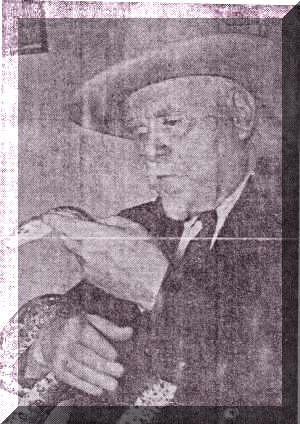
Jim “Col. William" Brown - Snake Oil Salesman
Jim, or “Col. William” as he was known in show business, was a colourful man, “one of the last of the old time medicine show men”. He was a rebel who ran away to join the circus. He became a carnival performer and a “snake oil” salesman who was known to set up his stand on street corners to sell his elixirs. He was the black sheep of the family
“As Col. Brown he was known to thousands of Canadians, and to more thousands he sold his snake oil…. Until the last, he was a showman.
“His death caused considerable excitement and the circumstances surrounding it were as unusual as some of the stories he told in his spiel when a crowd gathered. In his bag he had a big snake but no one knew it and when he was admitted at the hospital a nurse opened the bag seeking for some identification and the snake popped its head out…. Almost the same thing happened in Col. Brown’s neat and tidy two-roomed home in Galt. A police sergeant and constable went there to look for a hidden store of money he was, by popular opinion, supposed to have. They started the search aware there might be a snake around but they didn’t spot it for a minute. They found it curled up on top of a box. It apparently was allowed the freedom of the house while the Colonel was away.
“Colonel Brown, who was a striking figure in his 10-gallon hat, white goatee and moustache, was often called “a man of mystery.” He wore his hair long and flowing. For years he had his own medicine show that travelled all over the content. He travelled, too, with circuses and carnivals. The colonel, wherever he appeared, looked like a man who had just come from where the sweet magnolias blossom, every girl is a belle, a gentleman is “suh”. But he never saw the south, except with a medicine show. His had been a more rugged career. He was a member of the Canadian Mounted Rifles at the coronation of King Edward VII, he liked to recall, and before that he had fought in the Boer War, serving in the entire campaign.
“He was, he admitted, the oldest pitchman still on the road. His snake oil liniment was guaranteed by him to help or cure corns, colds, coughs, drawn cords, sprains, asthma, catarrh, hay fever and rheumatism among other things.
“He told interviewers that he was considered “the black sheep” of his family and he declined to give any of his family background. The colonel said he was a bachelor. His body was taken from here to Galt today. No one in either city seemed to know of any immediate relatives though it was reported that the colonel had a brother who was at one time chief of police in one of Canada’s largest cities.” (Obituary excerpts, Brantford Free Press, March 24, 1950)
Chief Constable Thomas Albert Brown, MBE, in Hamilton, Wentworth, Ontario, Canada

Chief Tom Brown Retirement
Chief Thomas Brown was Chief Constable from 1938-1944. Chief Brown joined the Department March 2nd, 1904. He was a Constable during the street car strike of 1906. The Riot Act was read in an effort to control disturbances in the City. One story told by Brown himself: He was assigned to ride on a street car from the Sanford Avenue barns to the Bay front to protect the passengers from injury. By the time they got to King and James Streets, every window in the car was broken by demonstrators throwing rocks. Miraculously, no one was hurt, but the car never finished its run. At one point, a group rolled a large boulder on top of the car from some high point and it came through the roof of the car. Demonstrators rushed then and the car was de-railed and turned over on its side with the passengers, driver and then Police Constable Brown fleeing for their lives.
Chief Brown was granted retirement leave in February 1944 and retired on pension April 27th, after 40 years of police service. One outstanding event in his tenure as Chief was the visit to Hamilton in 1939 of King George VI and Queen Elizabeth, and it was his pleasure to have met their Majesties personally
c/o Hamilton Police Service Archives
The Chief and the King
Follow along with the fascinating emerging story of Police Chief Tom Brown and mobster Rocco Perri, the King of the Mob.
Chapter 1: Introduction -- Shadows
Part one of The Chief and the King: The story of the intersecting lives of Tom Brown, MBE, Chief of Police, and Rocco Perri, King of the Mob, in Hamilton, Ontario, Canada, 1908-1944.
Brown, Tom Sgt 1928 (back row, far right)
1928 Hamilton Police Sergeants; Back Row: W Yaxley, W McLean, G McNair, G Sharpe, B Thompson, Smith, T Brown; Front Row: R Lentz, E May, Insp Cruikshanks, R Hill, J Duffy.
Brown, Tom, 1928, front row, 3rd from left
Chief David Coulter and the Hamilton Police Department 1928 Rear Row – Sixth Row B. Sindall, A. Kay, B stewart, J. Garvey, R. Parmenter, G. Reed, G. Snelling, T. Bodden, E Hall, T. Cline, F. Hedden, T. Miller, J. Crozier, S. Nesbitt, N. Burton, B. Tasker Fifth Row __________________, P. Smyth, C. Stevens, L. Reid, W. Maddock, B. Myers, ________________ , S. Catherwood, W. Gower, J. Fisher, B. Pasel, A. Goddart, W. Munroe, R. Hagen, G. Brewster, S. Walker, R. Buttenham Fourth Row S. McKee, A. Arnold, W. Clift, H. Smyth, A. McMillan, W. Davey, H. Harrison, J. Tomlinson, A. Jackson, A. Donaldson, A. Forbes, F. Supprell, W. Barkwell, R. Matteson, N. Green, J. Freeborn, R. Patton. Third Row W. Coleman, J. Stevenson, J. Burton, R. Edwards, W. Mulseed, L. Curtiss, W. Wallace, F. Hill, W. Maddock, A. Ellis, T. Rouse, J. Sullivan, _____________ , G. Bickerdike, B. Merritt, W. McBeth, B. Wittaker. Second Row W. Hagen, R. Hughes, S. Gallard, A. Wilkinson, I. Hurst, H. Allen, H. Witthun, H. Keirnan, P. Maxwell, E. Barrett, C. Ghent, ________________ , R. Buttenham, W. Kingerly, R. McBride, W. Davidson. First Row – Front Row D. McGregor, D. Lyle, t. Brown, B. Thompson, J. Duffy, H. Smith, R. Hill, d. Coulter, E. Goodman, J. Cruikshanks, E. May, W. Yaxley, R. Leinz, G. Sharpe, G. McNair, R. Coldburn, B. Cline.
Images c/o the Hamilton Police Service Archives
Chief Constable Thomas Albert Brown, MBE, and Jean Stewart in Hamilton, Wentworth, Ontario, Canada
Chief Const. Thomas Albert Brown, MBE, Chief of Police, b. 12 Apr 1880, Tandragee, County Armagh, Ireland, d. 30 Mar 1952, Hamilton, Wentworth, Ontario, Canada (Age 71 years) married on 19 Oct 1904 in Central Presbyterian Church, Hamilton, Wentworth, Ontario, Canada to Jane Ord Stewart, b. 26 Sep 1875, Hamilton, Wentworth, Ontario, Canada, d. 1957, Hamilton, Wentworth, Ontario, Canada (Age 81 years). She was the daughter of Hugh Stewart and Jane Ord.
Tom immigrated from Ireland to Canada in 1888 at age 8. He was educated in Hamilton. One of his early jobs was as a grocery clerk in a German-dominated area of town. Tom taught himself to speak German while working in that store. The 1901 census shows him as a grocery clerk. He later worked as a salesman in a packing firm.
Tom was colour-sergeant of the 13th Royal Regiment, and was selected by his regiment to represent them at the coronation of Edward VII at Westminster on 9 Aug 1902.
(The 13th Battalion of Volunteer Militia established Hamilton in 1862. Between 1899 and 1902, during the Boer War, many members of the 13th served in South Africa as members of the 2nd (Special Service) Battalion of the Royal Canadian Regiment and the 1st Canadian Mounted Rifles. Not asked to mobilize for the war, the 13th Battalion remained in Canada and was redesignated 13th Regiment in 1900 and 13th Royal Regiment in 1910.)
On March 2, 1904, at age 24, Tom left commercial employment and joined the Hamilton City Police Force. During that same year he married Jean Stewart and began his family. On 19 Oct 1904, Tom married Jean Ord Stewart at Central Presbyterian Church in Hamilton. It is not known how they met. Eight months later, on 28 June 1905, they welcomed their first child, Stewart Brown. They were living at 173 Walnut Street South in Hamilton at the time.
The 1911 census shows Tom as a policeman working for the city of Hamilton, working 52 hours per week and earning $1500 per year. Tom and his wife and children were also living with Jean’s widowed mother, Mary Stewart (née Tait) at the time.
One newspaper source says that he served 12 years as a constable before beginning to climb the ranks. Another source mistakenly says that he was a Sergeant during the violent Hamilton street car strike of 1906. However, a Hamilton Spectator newspaper clipping dated March 6, 1919 announces his promotion to Patrol Sergeant.
In 1921, Tom was residing at 13 Lorne Ave in Hamilton with his wife, all four children, and his widowed mother-in-law, Mary Tait.
In 1924 Tom and his family moved from St. John’s Presbyterian Church to Ryerson Methodist Church in anticipation of both denominations coming into Union in 1925. Thus the Brown family entered into the United Church of Canada, but their former congregation of St. John’s did not enter into Union and remained Presbyterian. Tom was a member of Ryerson United Church, a former president of the Irish Protestant Benevolent Society, a 32nd degree Master mason, and a member of the Rotary Club.
Tom Brown was a prominent public figure. He had an incredibly successful and highly decorated career as a police officer in Hamilton having risen from the lowest to the highest ranking officer during his career. At work, as Chief of the Hamilton Police Department, he was described as “always kindly and sympathetic and at all times had a fatherly understanding towards junior officers”. He was also a forward thinker. Tom was the Police Chief who was responsible for introducing two-way radios into the police cars. He was also strong under pressure. He was a sergeant during the violent Hamilton Railway Strike, and later as Chief he headed the department during the opening years of WWII where he was responsible for, what today is known as, “homeland security”. In this capacity Tom oversaw “civil defense problems”. Tragically, these “civil defense problems” actually involved the McCarthy-esque arrest of anyone of Italian descent in Hamilton who was even suspected of having Fascist sympathies. This racially motivated campaign resulted in enmity between the Italian community in Hamilton and the city government for years.
In 1943 Tom was awarded the honour of Member of the British Empire (what is now called The Order of Canada). “Twice during his long career he was honoured with the task of guarding his Sovereign, first at the coronation of King Edward VII and later during the visit of the King and Queen to Hamilton in 1939.” (Hamilton Spectator biography, Mar. 31, 1952)
Unfortunately at home Tom was in some ways very different than his work persona, and in other ways not different enough. He did not “at all time have a fatherly understanding” towards his family. Instead he was very much the “chief” at home. His nieces described him as a “large and intimidating” man. He was “the law at work and at home” and his authority was unquestioned… or else.
Tom inherited “The Strap” from his father. This was a disciplinary device far worse than just a father’s leather belt (see notes on John Brown). He used “The Strap” to excess on his son Stewart (see notes: John Stewart Brown). When “The Strap” was inherited by Tom’s grandson Kenneth it showed signs of having been “thoroughly” used for several generations. By today’s standard’s we would describe Tom as an emotionally and physically abusive father.
According to one of Tom’s grandsons, he also kept a collection of guns seized from criminals during his police career. These were stored in a box in the attic which he would show to his grandsons on occasion, and regale them with the tales of the actual crimes each gun was used in.
Tom was buried from Robinson Funeral Home and now rests in White Chapel Memorial Gardens in Hamilton.
Tom and Jean had the following children:
1. John Stewart Brown, b. 28 Jun 1905, Hamilton, Wentworth, Ontario, Canada, d. 29 Jan 1979, Burlington, Halton, Ontario, Canada (Age 73 years)
John Stewart Brown, b. 28 Jun 1905, Hamilton, Wentworth, Ontario, Canada  , d. 29 Jan 1979, Burlington, Halton, Ontario, Canada
, d. 29 Jan 1979, Burlington, Halton, Ontario, Canada  (Age 73 years). His information is presented below.
(Age 73 years). His information is presented below.
2. Margaret Ruth Brown, b. 12 Apr 1907, Hamilton, Wentworth, Ontario, Canada, d. Dec 1982, Prospect, Oneida, New York, USA (Age 75 years)
Margaret Ruth Brown, b. 12 Apr 1907, Hamilton, Wentworth, Ontario, Canada  , d. Dec 1982, Prospect, Oneida, New York, USA
, d. Dec 1982, Prospect, Oneida, New York, USA  (Age 75 years). Ruth married on 5 Jun 1926 in Hamilton, Wentworth, Ontario, Canada to Fred Elton Parkinson, b. 7 Dec 1901, Helmshore, Lancashire, England, d. 21 Feb 1978, Rockport, Maine, USA (Age 76 years).
(Age 75 years). Ruth married on 5 Jun 1926 in Hamilton, Wentworth, Ontario, Canada to Fred Elton Parkinson, b. 7 Dec 1901, Helmshore, Lancashire, England, d. 21 Feb 1978, Rockport, Maine, USA (Age 76 years).
Ruth Brown was born in 1907 in Hamilton, Wentworth, Ontario, Canada, as the second child of Tom Brown and Jean Stewart. Her father was the chief of police in Hamilton. Her childhood best friend was Harriett Jones.
On 5 Jun 1926, at age 19, Ruth married in Hamilton, Wentworth, Ontario, Canada to Fred Parkinson. Her best friend, Harriet Brown, was supposed to be her Maid of Honour, but Harriett was unable to attend the wedding due to her own mother’s death.
Four years later, in 1930, Ruth’s older brother, Stewart Brown, married Harriett Jones.
Ruth and Fred had two children in Hamilton: Stewart and Ross.
In 1938, at age 31, Ruth and Fred moved their young family to New Hartford (Utica), New York, USA.
They had the following children:
- Stewart Elton Parkinson, b. 27 May 1930, Hamilton, Wentworth, Ontario, Canada, d. 12 Feb 1998, Cape Vincent, Jefferson, New York, USA (Age 67 years). He married on 29 Sep 1951 in Northfield, Washington, Vermont, United States to Veva Mack, b. 10 May 1942, New York, d. 14 Aug 2001, Cape Vincent, Jefferson, New York, USA (Age 59 years).
Obituary from Watertown Daily Times (New York, USA) – 14 FEB 1998. Deceased: Stewart E Parkinson, Business Owner. Stewart E Parkinson, 67, of 32878 Route 12E, died Thursday at his home, where he had been under the care of Hospice of Jefferson County. He had been ill with cancer since December. He and his wife Veva owned and operated Le Petit Ciel Mobile Home Park and River Ram Wool Farm. Born May 27, 1930 in Hamilton, Ontario, son of Fred and Ruth Brown Parkinson, he moved with his family to the Utica area, graduating from New Hartford Central School. He was an alumnus of Norwich University, Northfield, Vermont. He married Veva Mack in 1973. The couple lived for many years in Prospect. Mr. Parkinson was a purchasing agent for General Electric Company in Utica before moving to Cape Vincent in 1985. While in Prospect, Mr. Parkinson was a village trustee. He was an avid pistol shooter, a member of Trenton Fish and Game Club and a snowmobiler with the Rat Pack. After moving to Cape Vincent, he was a director and member of Cape Vincent Chamber of Commerce and a member of the Cape Vincent Correctional Facility’s advisory board. he enjoyed raising sheep, horses, dogs and birds. He was a member of the Black River Valley Horseman’s Association. Besides his wife, he is survived by a son, Jay, Holland Patent; three daughters, Ruth Ann Parks, California, Barbara Gardner, Vernon Center, and Tamara Mason, Cape Vincent; a stepson, Fred Robenski, Taberg, eight grandchildren and several nieces and nephews. A son, Jeffrey, died in 1985. They had the following children:
- Jeffrey Paul Parkinson, b. 20 Apr 1952, Montpelier, Washington, Vermont, USA, d. 27 Jan 1985 (Age 32 years)
- Living Parkinson
- Living Parkinson
- Living Parkinson
- Ross Allan Parkinson, b. 16 Apr 1936, Hamilton, Ontario, Canada, d. 8 May 2016, Eatonton, Georgia, USA (Age 80 years). Ross married firstly on 7 Apr 1956 in New Hartford (Utica), New York, USA to Martha A Bartle, b. 1936, d. 1979 (Age 43 years). He married secondly on 20 Dec 1963 in New Hartford (Utica), New York, USA to Nina Josina Leonora Van Gelder, b. Private.
Ross Parkinson was born in 1936 in Hamilton, Wentworth, Ontario, Canada.
In 1938, when Ross was just two years old, his parents moved to New Hartford (Utica), New York, USA. Ross attended Cornell University but dropped out after losing right arm in 1956, at age 20, in an industrial accident at the company that his father was running in nearby Oriskany, New York, USA.
In 1956, at age 20, the same year that he lost his arm, Ross married in New Hartford, New York, USA to Martha Ann Bartle, with whom he had four children.
In 1962 or1963, Ross and Martha divorced.
On 20 Dec 1963, at age 27, in New Hartford, New York, USA, Ross married to Nina van Gelder.
A year later, in May 1964, Ross and Nina moved to Halmstad, Sweden, where he worked as a consultant to a Swedish felt maker. They extended their stay to 14 years after Ross became the General Manager of the company.
Ross and Nina had two daughters in Sweden. According to a long-time family friend Ross may also have had another daughter, possibly named Eva, in Sweden with a woman named Siv Lindblom.
In 1978, at age 42, Ross sold the Swedish company, Wallbergs A/B, to Albany International.
In 1979, Ross and Nina and their daughters moved to Albany, New York, USA.
A few months later, in the spring of 1980, they moved to Blumenau, Brazil where Ross became Vice-President and General Manager of the Albany operations there. They were there for seven years.
In 1987, Ross and his family moved back to the United States where he was Vice-President of Northern operations for the company. Ross later retired in Eatonton, Georgia, USA, where he died in 2016 at age 80.
(Source: Author’s personal correspondence with Ross in 2010, supplemented by information from long-time family friend, Jim Kellner. See below.)Ross and his frist wife, Martha, had the following children:
Ross and his second wife, Nina, had the following children:
3. Mary Helen Brown, b. 4 Dec 1912, Hamilton, Wentworth, Ontario, Canada, d. UNKNOWN, Hamilton, Wentworth, Ontario, Canada
Mary Helen Brown, b. 4 Dec 1912, Hamilton, Wentworth, Ontario, Canada  , d. UNKNOWN, Hamilton, Wentworth, Ontario, Canada
, d. UNKNOWN, Hamilton, Wentworth, Ontario, Canada  . Helen married Abt 1930 in St. John’s Presbyterian Church, Hamilton, Wentworth, Ontario, Canada to George Robson, b. Abt 1910, d. UNKNOWN. Mary was described as “delicate” like her brother Stewart. Harriet Brown recalls her name as “Helen Elizabeth” or “Betty”, but Harriet may have been confused. Her sister, Florence Brown, was her maid of honour and Dorothy Tasker sang at the wedding. Helen and George had the following child:
. Helen married Abt 1930 in St. John’s Presbyterian Church, Hamilton, Wentworth, Ontario, Canada to George Robson, b. Abt 1910, d. UNKNOWN. Mary was described as “delicate” like her brother Stewart. Harriet Brown recalls her name as “Helen Elizabeth” or “Betty”, but Harriet may have been confused. Her sister, Florence Brown, was her maid of honour and Dorothy Tasker sang at the wedding. Helen and George had the following child:
4. Florence Jean Brown, b. 9 Aug 1917, Hamilton, Wentworth, Ontario, Canada, d. 18 Apr 2009, Edmonton, Alberta, Canada (Age 91 years)
Florence Jean Brown, b. 9 Aug 1917, Hamilton, Wentworth, Ontario, Canada  , d. 18 Apr 2009, Edmonton, Alberta, Canada
, d. 18 Apr 2009, Edmonton, Alberta, Canada  (Age 91 years). Florence married in Dec 1941 in Edmonton, Alberta, Canada
(Age 91 years). Florence married in Dec 1941 in Edmonton, Alberta, Canada  to Basil Dean, b. 1915, Newbury, Berkshire, England
to Basil Dean, b. 1915, Newbury, Berkshire, England  , d. Aft 1962, Calgary, Alberta, Canada
, d. Aft 1962, Calgary, Alberta, Canada  (Age > 48 years).
(Age > 48 years).
Basil Dean was born in Newbury, England and graduated from the University of London in Journalism where he received an award for “Best Student of The Year” in 1936. He came to Canada on a work experience or internship and spent several months at each of several Southam Publishing newspapers including the Montreal Gazette, Hamilton Spectator, Edmonton Journal and Calgary Herald. It was while working at Hamilton Spectator that he met his future wife, Florence Jean Brown, who was a reporter. While at the Edmonton Journal he spent some time covering the “police beat”. When the old police station was torn down in the ’70s, they discovered a desk with “Basil Dean, the only gentleman in Alberta” scribed inside one of the drawers.
Basil fell in love with Canada and Florence Jean Brown and decided to emigrate. He was the only male Dean to ever leave Newbury and was the oldest of five children followed by John, Betty, Josie and Tony. John took over the family grocery store when their father died in the mid-‘1950s; John died circa 1965. Betty died a few years ago and Josie a number of years ago. Tony died just before Christmas 1995. Basil died just before Christmas, 1967.
After he decided to make Canada home, he covered King George VI’s Canadian tour among other things and returned to Hamilton – no doubt largely due to his future wife. His future father-in-law, Hamilton Police Chief, Tom Brown, was in charge of security for the same royal visit.
Basil joined the RCAF and received orders to report for duty on Boxing Day, 1941. A hasty marriage was in order. Jean’s father, Tom Brown, arranged the wedding, apparently using his connections to circumvent waiting periods, etc. and managed to scrounge a minister on Christmas Day. Basil married Jean in the Brown family home in Hamilton, Ontario, Canada, on Christmas Day, 1941.
During the war Basil was posted to several locations in Canada including Edmonton so Jean went with him. He was a media liaison officer and while in Edmonton covered the construction of the Alaska Highway. He eventually rose to rank of Squadron Leader and spent several years overseas attached to the RCAF’s Overseas HQ in England. Jean remained in Hamilton when he was oversease and continued working as a reporter. At the end of the war he was stationed in England. Jean travelled there in 1945 after VE Day, where they remained for a time.
While in England, in 1946, Jean gave birth to her first child.
Basil covered the Winter Olympics in Switzerland in 1948. When he & Jean were invited to some sort of gala she didn’t have anything suitable to wear; Barbara Ann Scott, the Canadian Gold Medalist, loaned her a gown.
Basil, and his young family, moved back to Canada in the late spring of 1949 and Basil became a reporter at the Calgary Herald and in 1955 became its publisher. He was made Publisher of the Edmonton Journal in January, 1962.
Basil was made an Honourary Chief at Hobbema, AB (now Maskawacis First Nation) around 1959-60 for the stance that the Calgary Herald took against the federal government’s planned changes to the Indian Act and which they were forced to abandon.
Basil and Florence had the following children:
- Living Dean
- Christopher Dean, b. Nov 1952, Calgary, Alberta, Canada
 , d. Aug 1990, Alberta, Canada
, d. Aug 1990, Alberta, Canada  (Age ~ 37 years). Christopher married in 1974 in Alberta, Canada, to Philippa Byfield, b. UNKNOWN. Christopher and Philippa had no children. Both died young under tragic circumstances.
(Age ~ 37 years). Christopher married in 1974 in Alberta, Canada, to Philippa Byfield, b. UNKNOWN. Christopher and Philippa had no children. Both died young under tragic circumstances.
1941ish – Tom Brown, Jean Brown (Stewart), Florence Brown, Basil Dean
1941ish – Tom Brown, Jean Brown (Stewart), Florence Brown, Basil Dean
1938 or 39 – Basil Dean, Stewart Brown, Florence Brown, Harriett Brown (Jones)
1938 or 39 – Basil Dean, Stewart Brown, Florence Brown, Harriett Brown (Jones)
undated probably mid 1930s -Robson wedding – Florence Brown, Mary Helen Brown, George Robson, unknown best man
undated probably mid 1930s -Robson wedding – Florence Brown, Mary Helen Brown, George Robson, unknown best man
J. Stewart Brown and Harriett Ellen Jones in Hamilton, Wentworth, Ontario, Canada
John Stewart Brown, b. 28 Jun 1905, 173 Walnut St. S., Hamilton, Wentworth, Ontario, Canada, d. 29 Jan 1979, Burlington, Halton County, Ontario, Canada (Age 73 years). He married on 5 Apr 1930 in Ryerson United Church, Hamilton, Wentworth, Ontario, Canada to his little sister’s best friend, Harriet Ellen Jones, b. 13 Oct 1906, Bolton, Greater Manchester, Lancashire, England, d. Abt Nov 1998, Mississauga, Peel County, Ontario, Canada (Age 92 years)
John Stewart Brown, or “Stewart” as he was known, was a kind and gentle man, who spoke seldom. He was quietly affectionate towards his children and grandchildren. Stewart was described as a very shy, quiet and delicate man.
Family events with Grampa Brown were always warm and fun. One memorable time was when he took his primary-school-aged grandsons, Ian Souter and Ryk Brown, on a hiking trip through the Royal Botanical Gardens and the trio got lost in the woods so badly that they ended up exiting the Gardens a few miles from where they’d parked. Grampa had to leave the young boys at a nearby plaza and hitchhike back to pick up the car. (Today we might shudder at leaving two young boys alone at a plaza, but in those days it was safe to do so.) Since Grampa Brown died when his oldest grandchildren were just in early high school (including the author) there are few memories of him except warm family Christmas celebrations together. Since both of his children also died prematurely only Kenneth was able to contribute a few thoughts to this narrative.
Sadly, it appears that Stewart’s upbringing may have been much less kind than the kindness he in turn shared with his children and grandchildren. There is strong evidence to indicate that Stewart was raised in a household of violence and prejudice (see notes: Tom Brown). Like his father, he was also a member of the (anti-Catholic) Canadian Irish Protestant Benevolent Society (Orange Lodge) and eventually became president of its Hamilton chapter.
Stewart was the only son of a strong patriarch, and he never lived up to his father’s unreasonable expectations for “the son of a police chief”. As a boy, Stewart was once “sent away” for a summer to stay with his Uncle William and family to “recover from some unknown ailment”. His cousin Winn recalled this ailment as “odd” and she doesn’t recall him actually being “sick”, but he never went outside that summer. In those days children were “sent away” to stay with relatives for only one reason: to hide them from public scrutiny. Girls were usually “sent away” if they became pregnant. Boys were “sent away” for a different reason. It is believed that Stewart was sent away to be out of the public eye and to recover from an excessive beating at the hands of his father with the “Strap” (for a description of the abhorrent “Strap” see notes: Tom Brown and his father John Brown).
In 1921, Stewart was 15 and working as a clerk. It does not indicate that he was a student, so it appears that he may have dropped out of school or had a job on the side.
In 1931, at age 25, Stewart was residing at 279 Wexford Ave. in Hamilton, Wentworth, Ontario, Canada with his new bride, Harriet. They were residing in a house built for them by Harriet’s father, Dick Jones. Their home was valued at $4500. Stewart was working as an accountant in an implement works earning $1400 per year.
Because Stewart worked for the government he was exempted from military service during WWII. Stewart’s father described Stewart’s employment as “unglamorous” and spoke about Stewart’s exepmtion from miiltary service with tones of shame as his father had had a “proud” military career and a “glorious” professional career. By today’s standards there is no doubt we would describe Stewart as having been an emotionally and physically abused child.
Stewart was (at least) the third known generation in the Brown family to inherit the family heirloom “Strap”. To his credit Stewart never used the strap on either of his children, but it hung on the kitchen wall as an ever-present reminder of disciplinary authority. He in turn passed it on to his son, Kenneth, who finally and appropriately disposed of it. Although Stewart did inherit his father’s anti-Catholic prejudices, he is to be thanked and credited for not passing on the violence with which he and his father were raised.
Harriett Jones was a classmate and childhood friend of Ruth Brown. Harriett married Ruth’s brother Stewart with Ruth as the maid-of-honour. Harriett would also have been Ruth’s maid-of-honour, but was unable to attend Ruth’s wedding because of the death of her mother Annie Jones (Liptrot).
Harriett was a gentle and proper woman; a classic Victorian. Her affections were carefully given.
Brown wedding, 5 Apr 1930, (BR) Richard Jones, Jean Brown (nee Stewart), Rev. Dr. Williams, (FR) Ken Pearson (best man), Ruth Brown (maid of honour), Harriett Jones, J. Stewart Brown
Stewart and Harriett had the following children:
1. Beverly Anne Brown, b. 10 Apr 1932, Hamilton, Wentworth, Ontario, Canada, d. 29 Dec 1992, Etobicoke (West Toronto), York, Ontario (Age 60 years)
1. Beverly Anne Brown, b. 10 Apr 1932, Hamilton, Wentworth, Ontario, Canada  , d. 29 Dec 1992, Etobicoke, York, Ontario, Canada
, d. 29 Dec 1992, Etobicoke, York, Ontario, Canada  (Age 60 years). Bev married on 18 Aug 1956 in Ryerson United Church, Hamilton, Wentworth, Ontario, Canada to Norman James Souter, b. 28 Jun 1930, Hamilton, Wentworth, Ontario, Canada, d. 19 Jan 1998, Etobicoke, Ontario (Age 67 years). They adopted the following children:
(Age 60 years). Bev married on 18 Aug 1956 in Ryerson United Church, Hamilton, Wentworth, Ontario, Canada to Norman James Souter, b. 28 Jun 1930, Hamilton, Wentworth, Ontario, Canada, d. 19 Jan 1998, Etobicoke, Ontario (Age 67 years). They adopted the following children:
2. Kenneth Richard Brown, b. 18 Apr 1937, Hamilton, Wentworth, Ontario, Canada, d. 9 Sep 1998, London, Middlesex County, Ontario, Canada (Age 61 years)
Kenneth Richard Brown, b. 18 Apr 1937, Hamilton, Wentworth, Ontario, Canada  , d. 9 Sep 1998, London, Middlesex County, Ontario, Canada
, d. 9 Sep 1998, London, Middlesex County, Ontario, Canada  (Age 61 years). Ken married in 1960 in Ryerson United Church, Hamilton, Wentworth, Ontario, Canada to Jacqueline Rose Angus, b: Private.
(Age 61 years). Ken married in 1960 in Ryerson United Church, Hamilton, Wentworth, Ontario, Canada to Jacqueline Rose Angus, b: Private.
Ken was born and raised in Hamilton, Ontario. He spent his whole life searching. Throughout his life he was very religious. He was very active in Ryerson United Church in Hamilton (the same church that his grandfather helped build) as a boy and youth and showed a strong passion in his Christian faith. He was president of the Tower Club (Ryerson’s youth group) and was a very active lay-preacher as a youth. As a boy he received a call from God to enter professional church ministry, but he was discouraged from pursuing this call by both his mother and a school teacher who regrettably and wrongly told him that he was “not smart enough” to pursue such a calling.
Having the door closed to his authentic call and vocation, Ken spent the rest of his life searching for an alternative vocation. He worked most of his life unsatisfied in retail and commercial sales (primarily in medical equipment sales) while remaining very active in the church, especially working with youth. In 1989 he was ordained as an Elder of the Presbyterian Church at Chalmers church in London, Ontario. His spiritual impact on youth was evidenced at his funeral, which was standing-room-only (in a sanctuary that seats over 500), with many former church youth having travelled great distances to attend.
Ken was also very active in Freemasonry; he was particularly intrigued by its quasi-religious and ancient historical aspects. One of his more proud achievements was the year he spent as Grand Junior Warden for the Grand Lodge of Canada (Ontario). He was widely respected by his “brethren” lodge members and his Masonic funeral was also largely attended.
Having been raised in a home of uneven and sparing affections, Ken was very careful to be equal and generous in his affections and support of both of his son’s widely different lives, careers and hobbies. Though his temper could sometimes get the better of him, Ken did break the lineage of hereditary family violence from his father’s side; he disposed of the family “heirloom” disciplinary leather strap. His descendants will be forever grateful. Ken was 61 when he suffered a series of debilitating strokes, the last of which proved fatal.
They had the following children:
- Richard (Ryk) Brown. He is the author of this project.
- Living Brown

